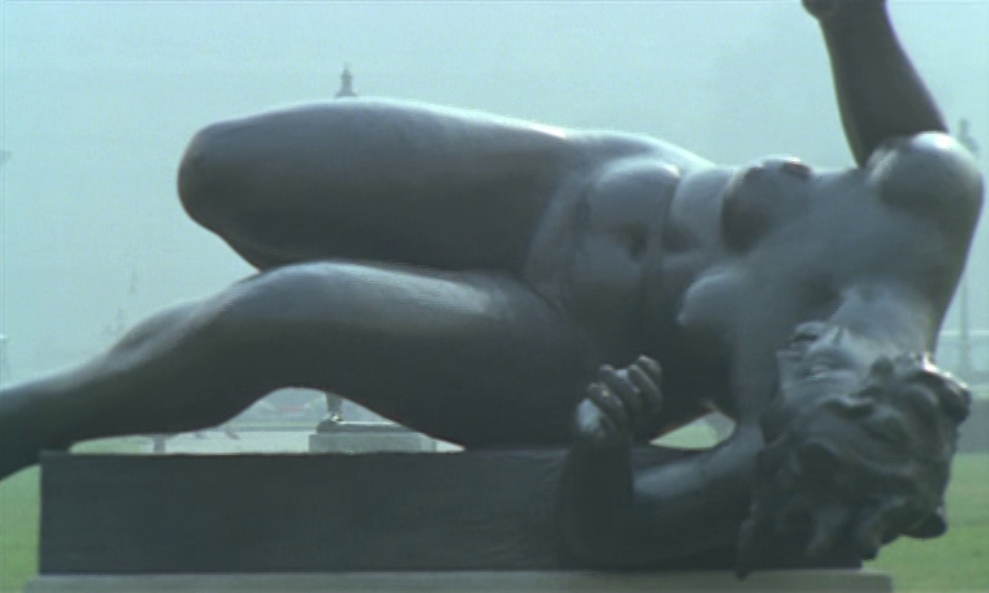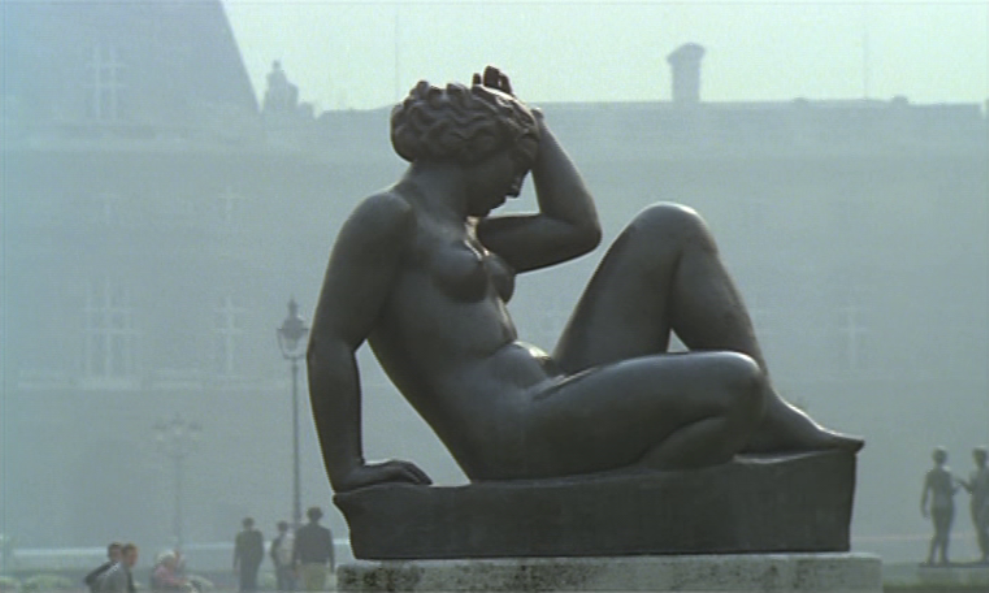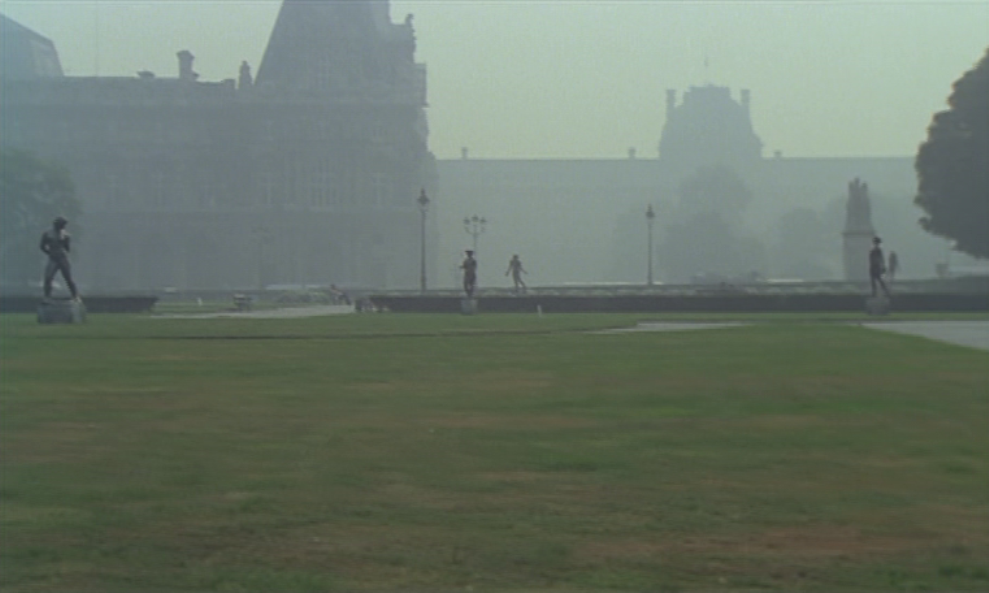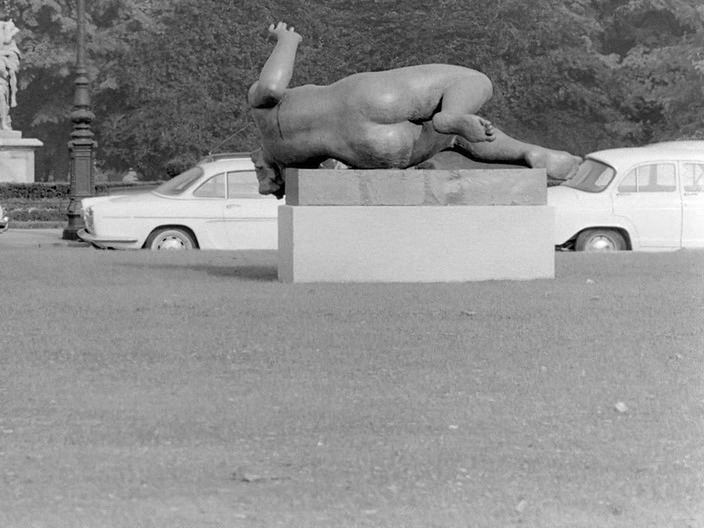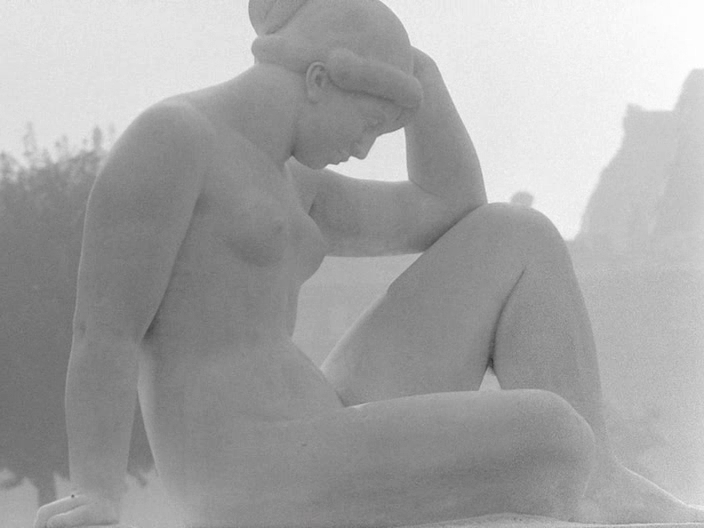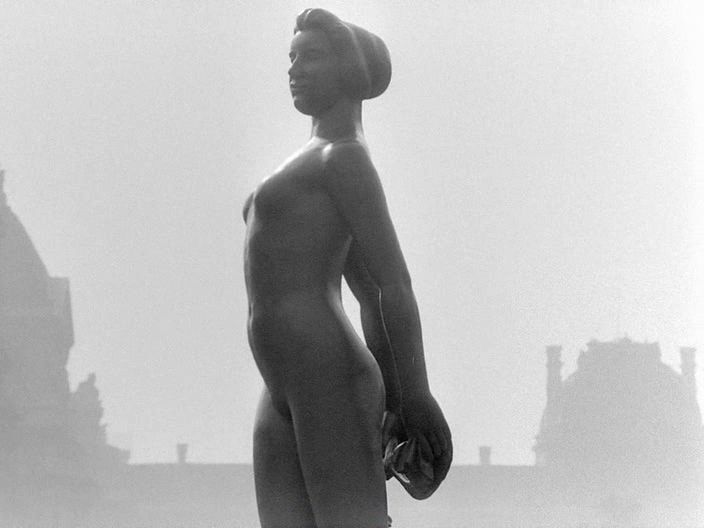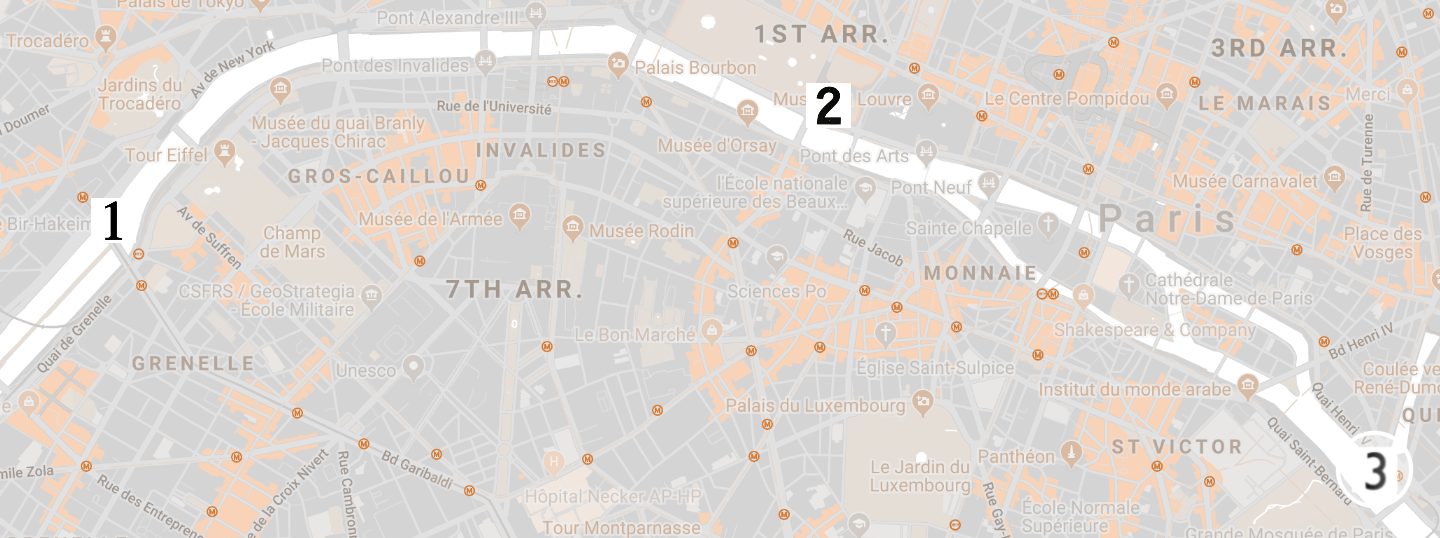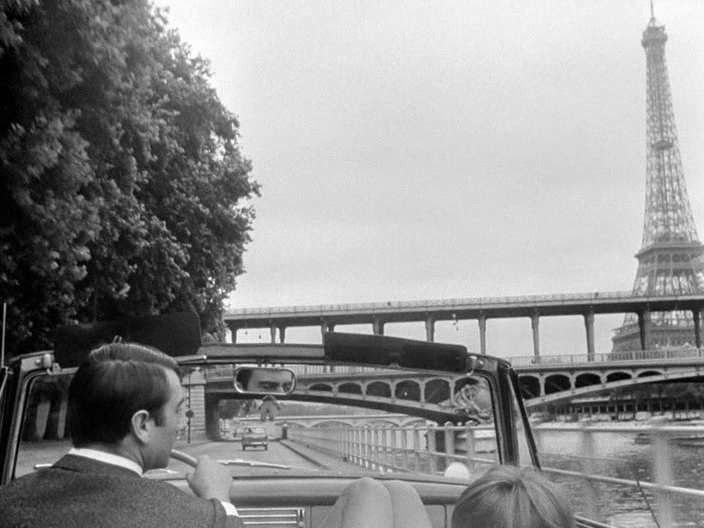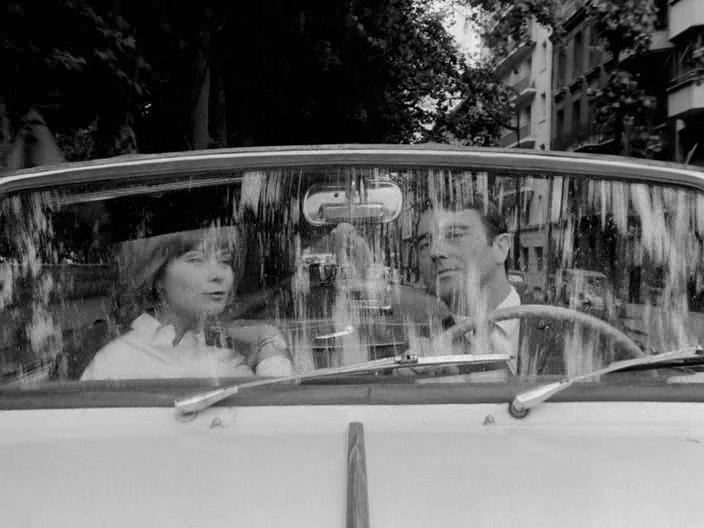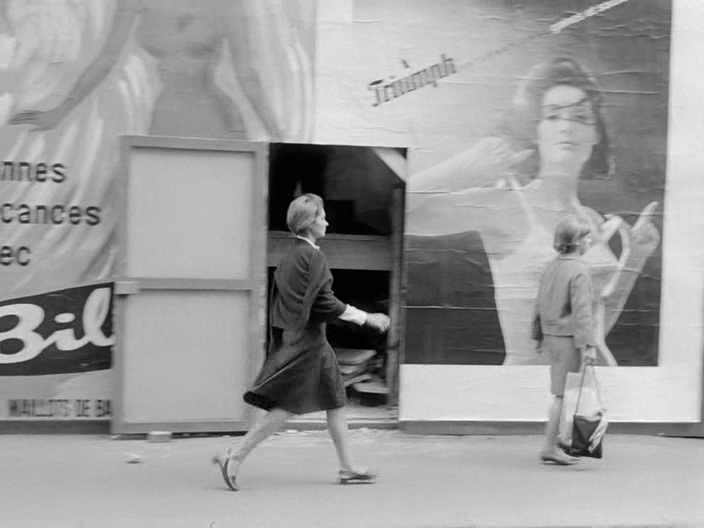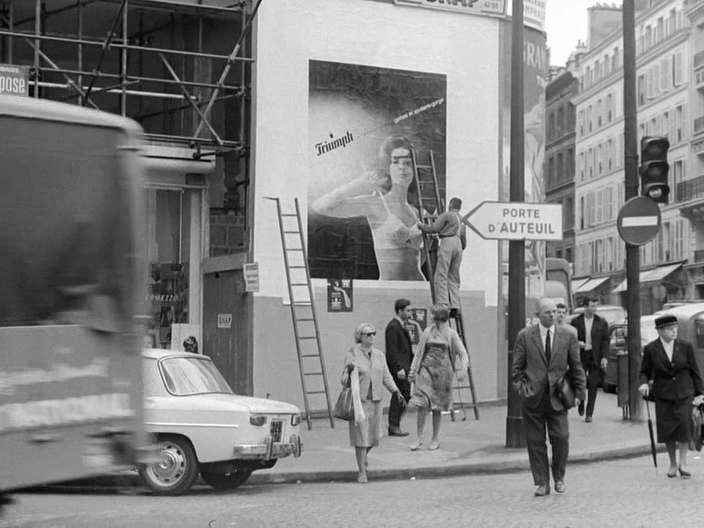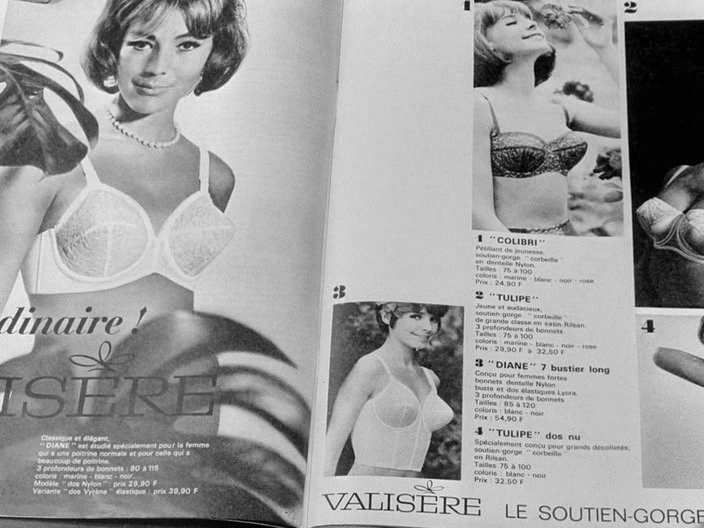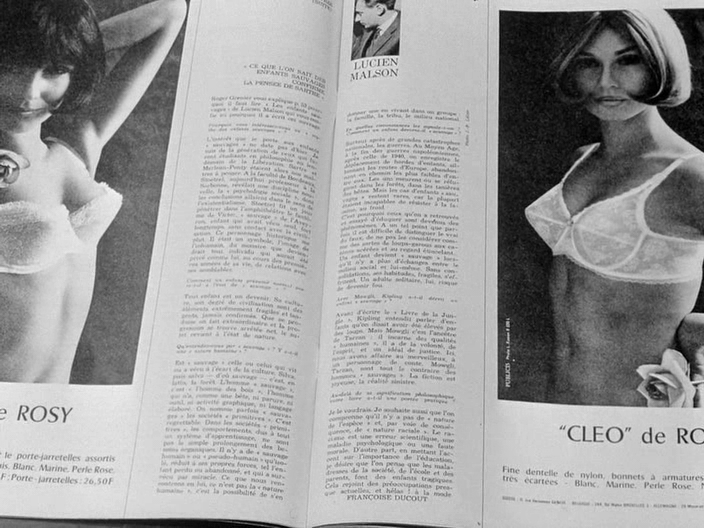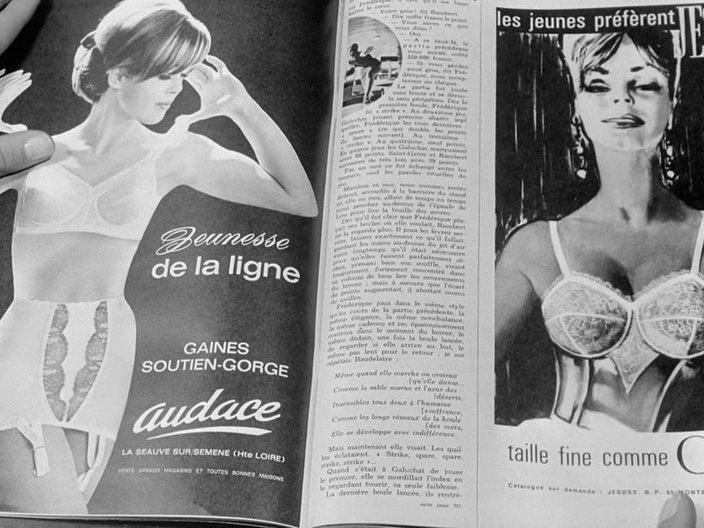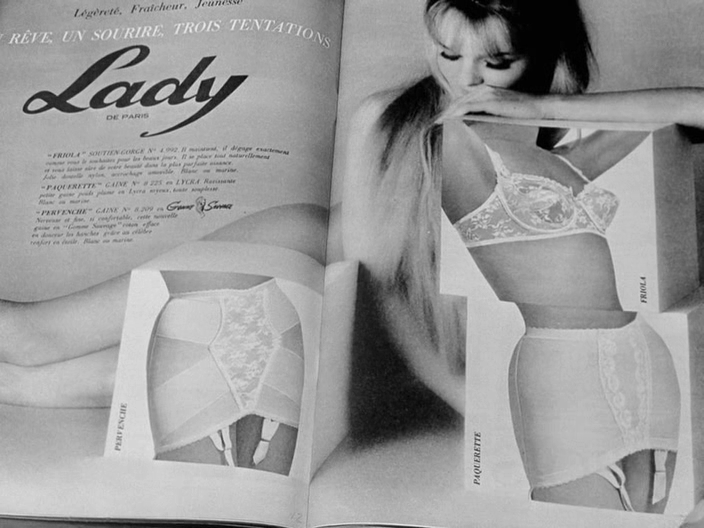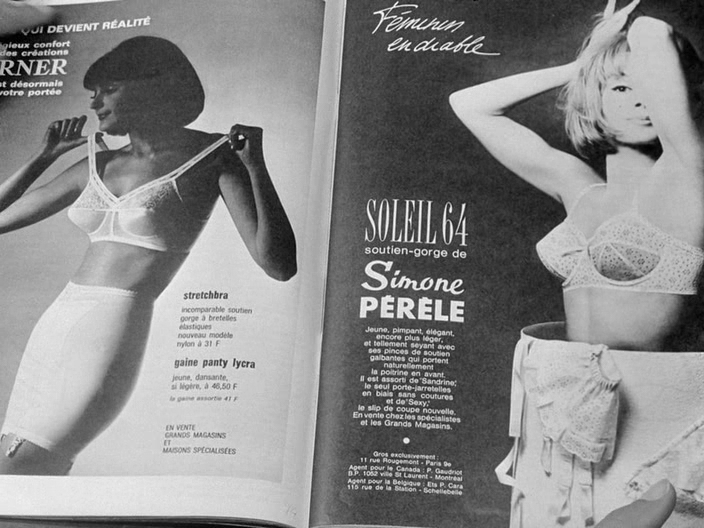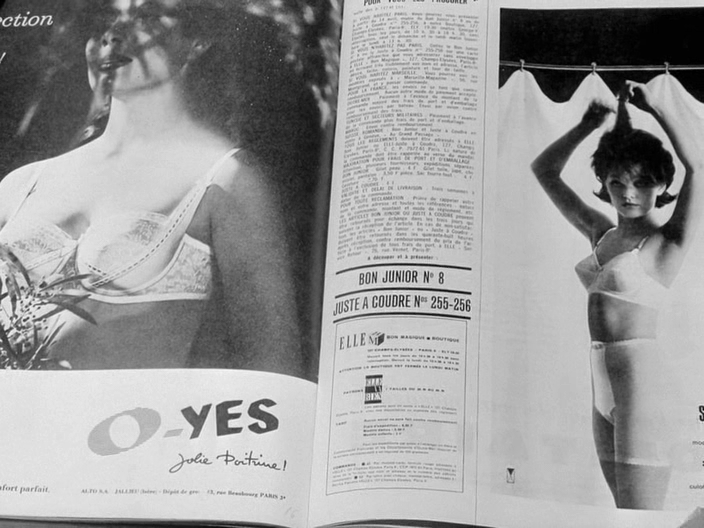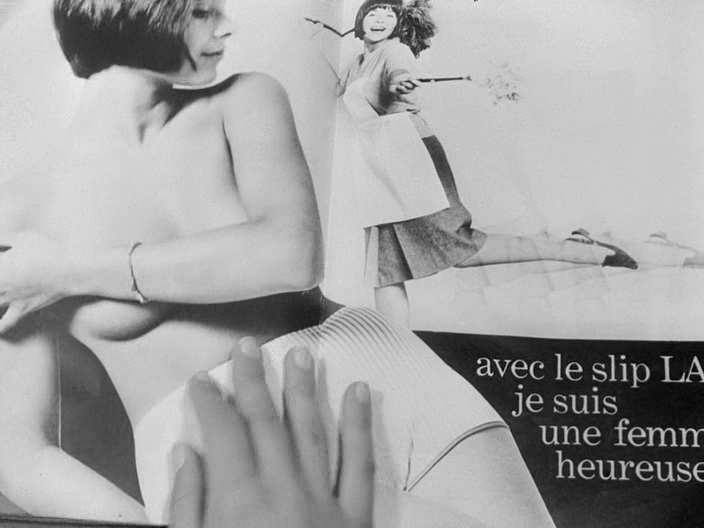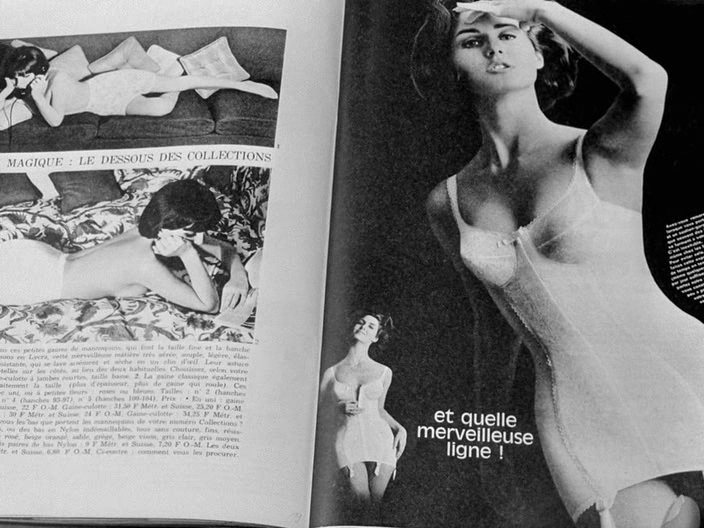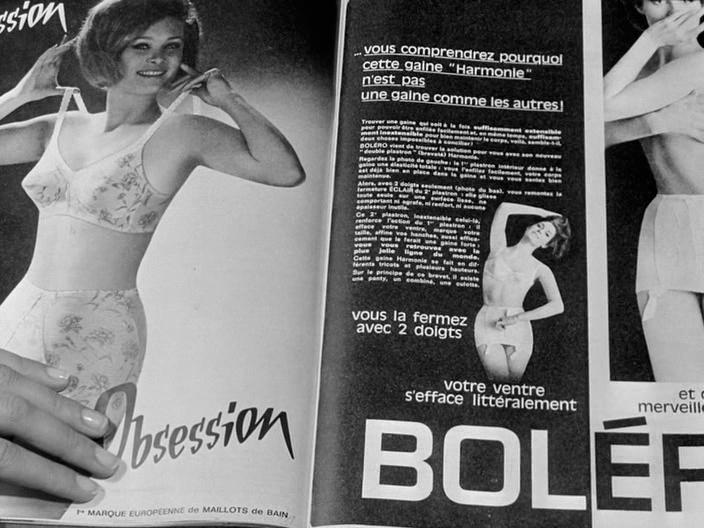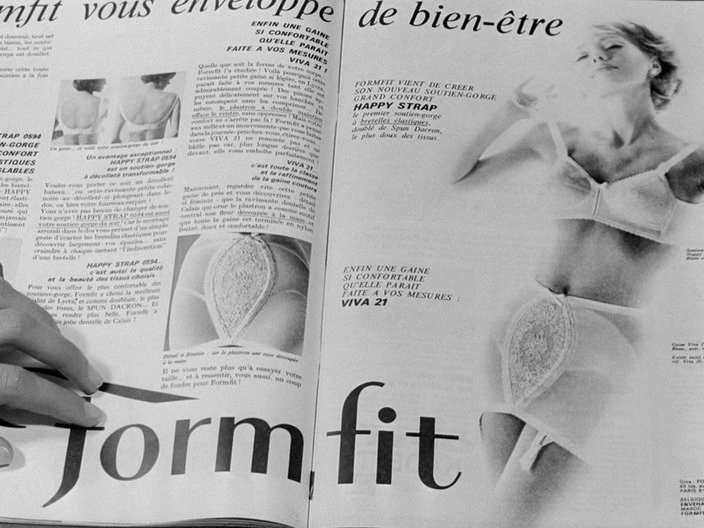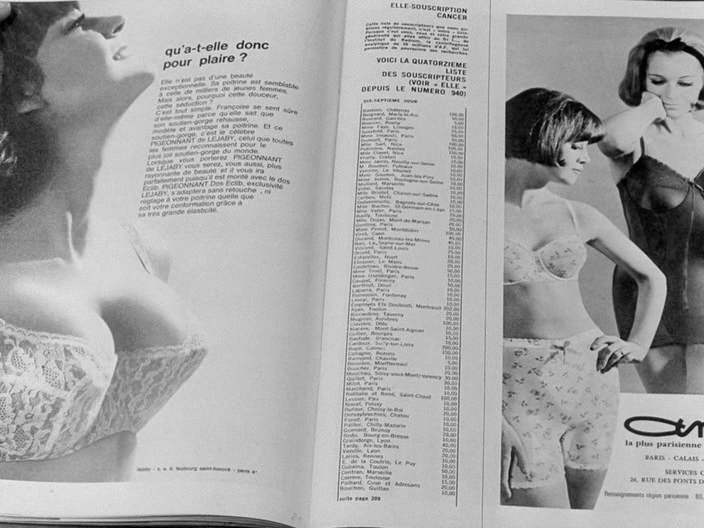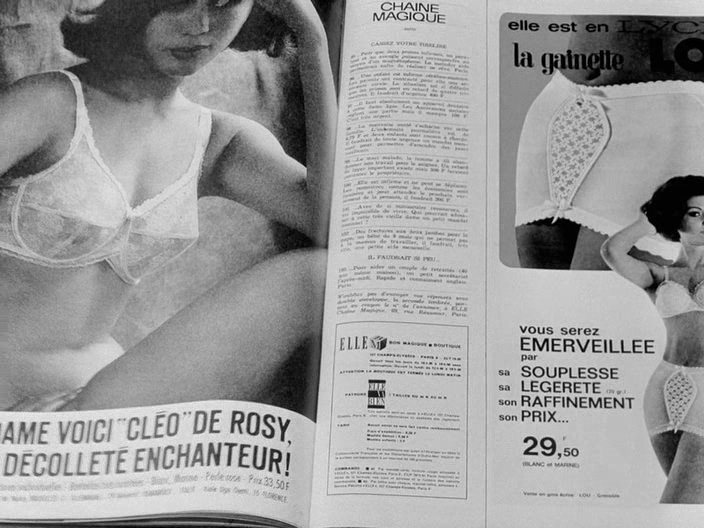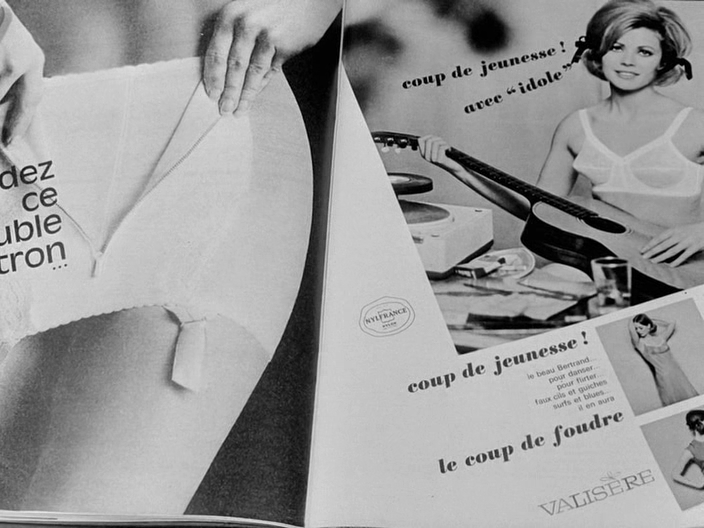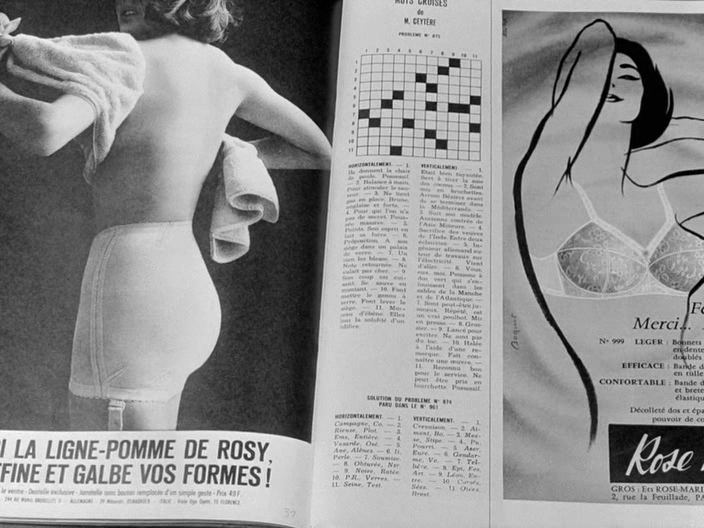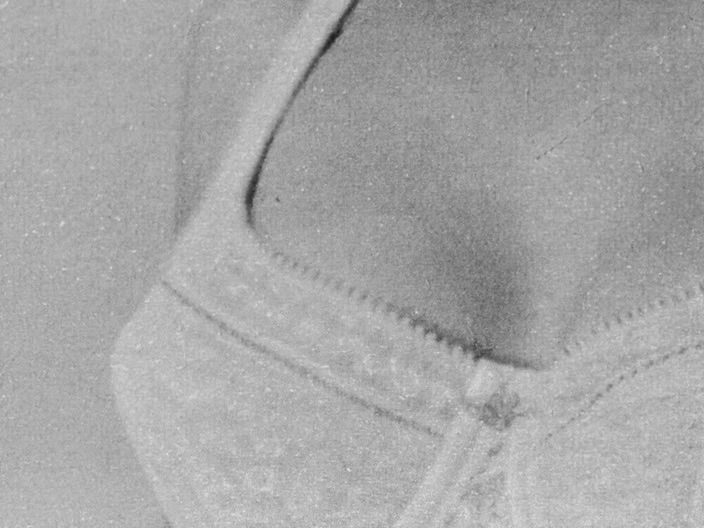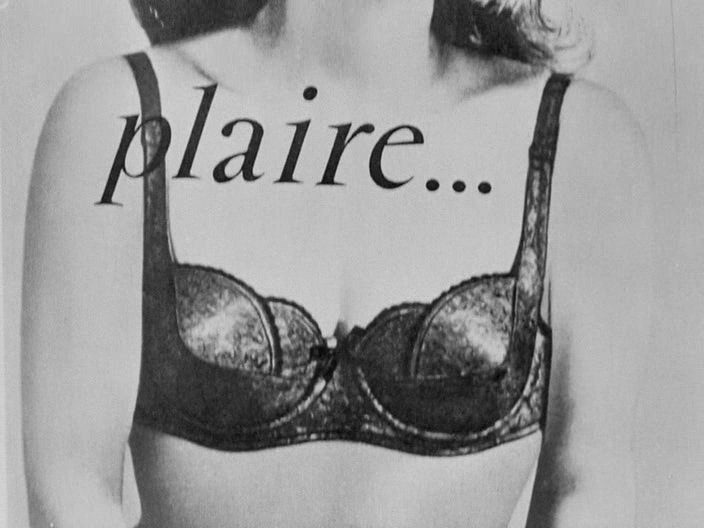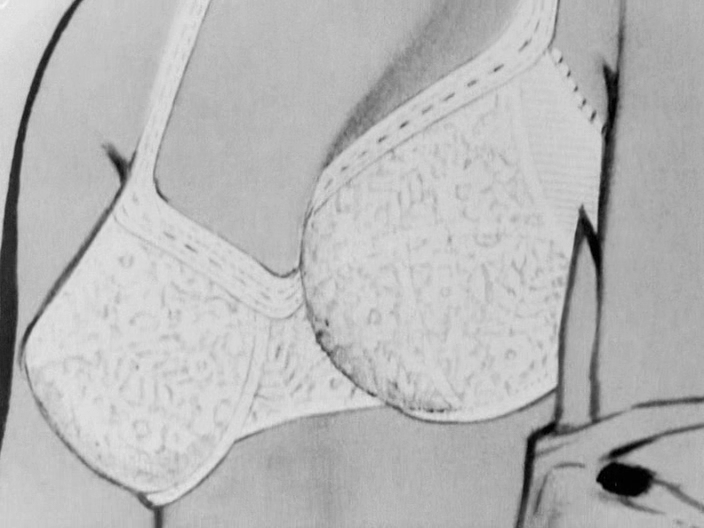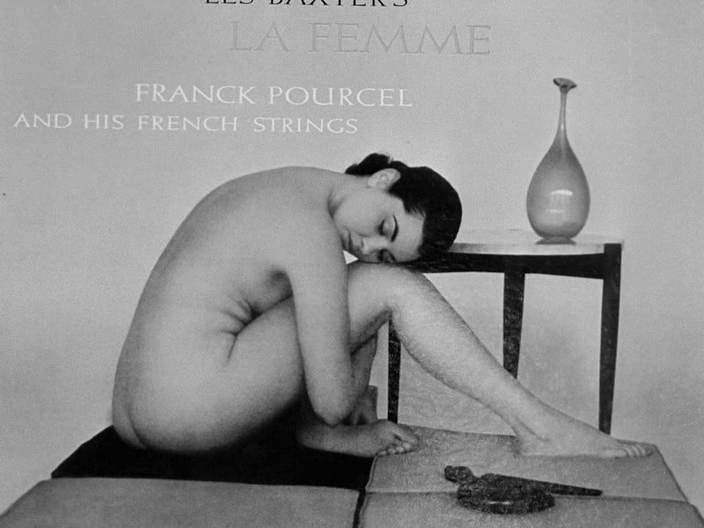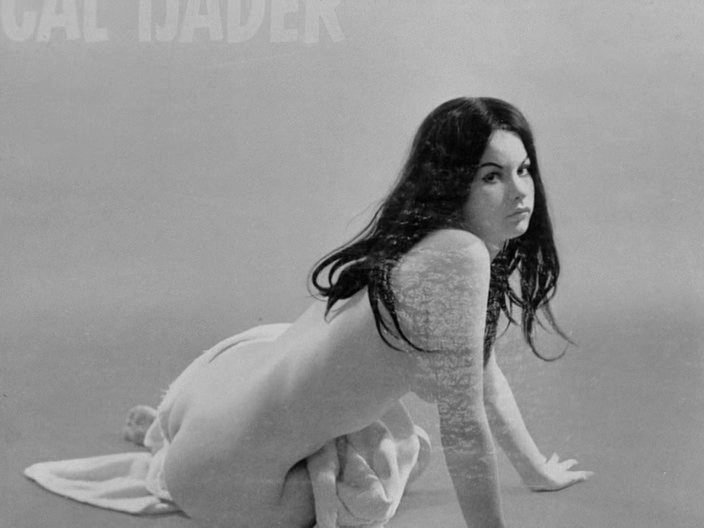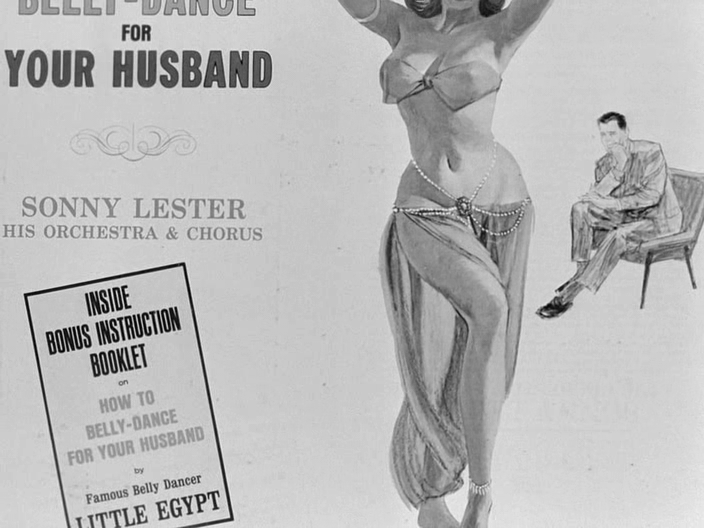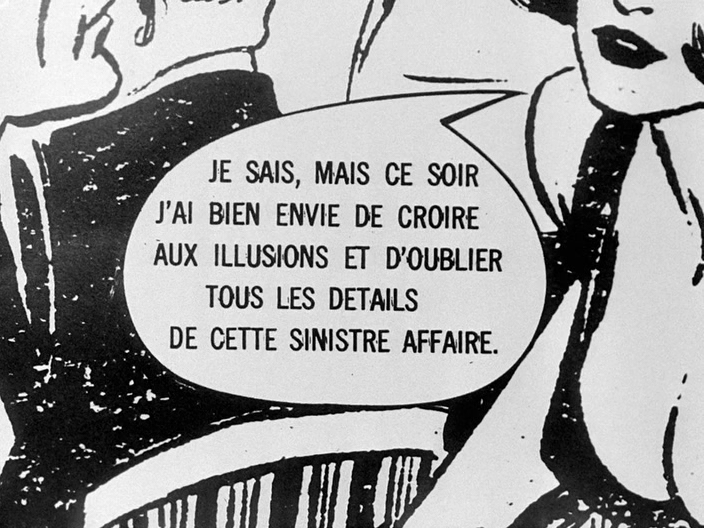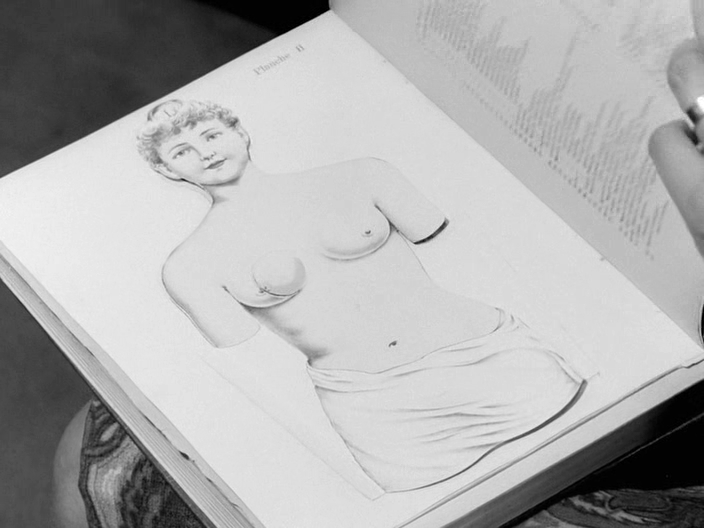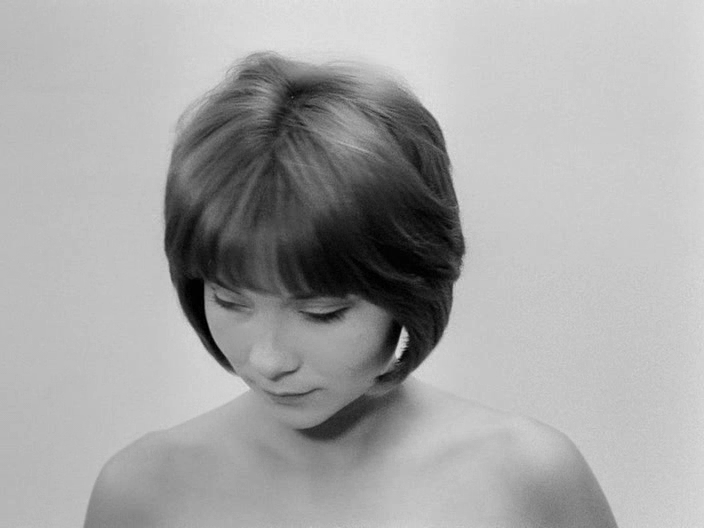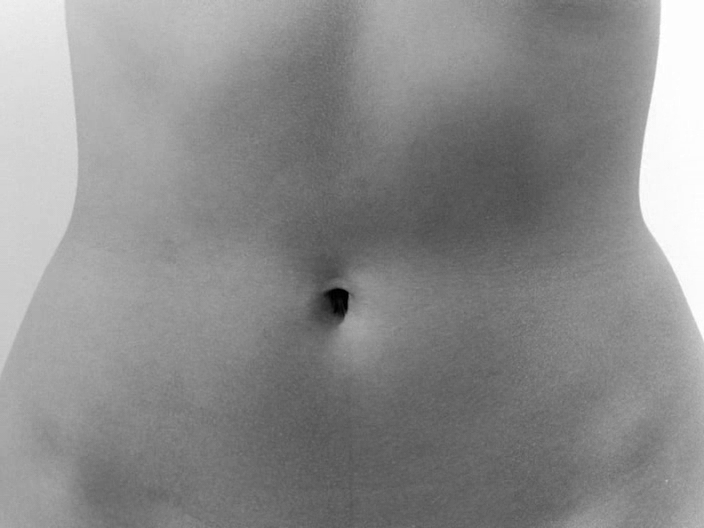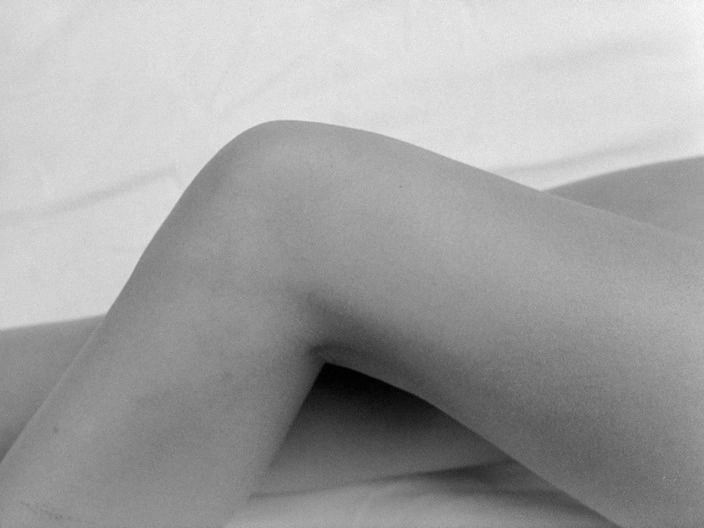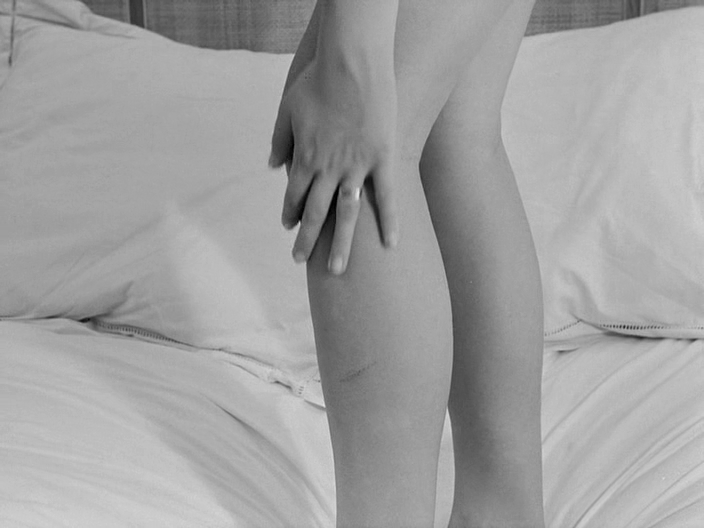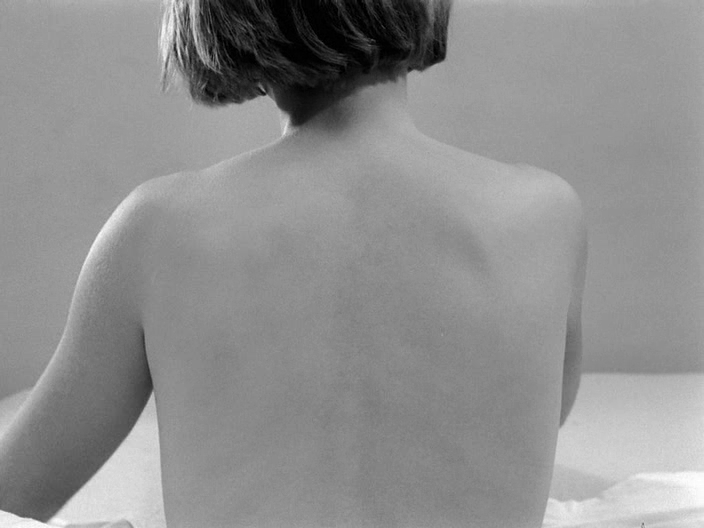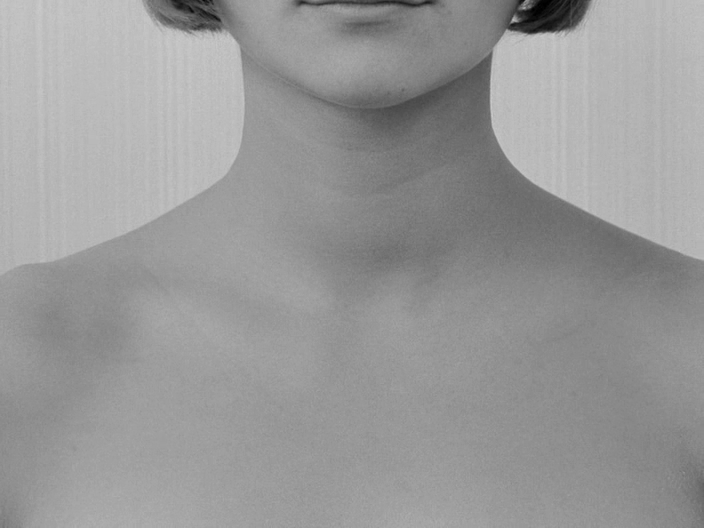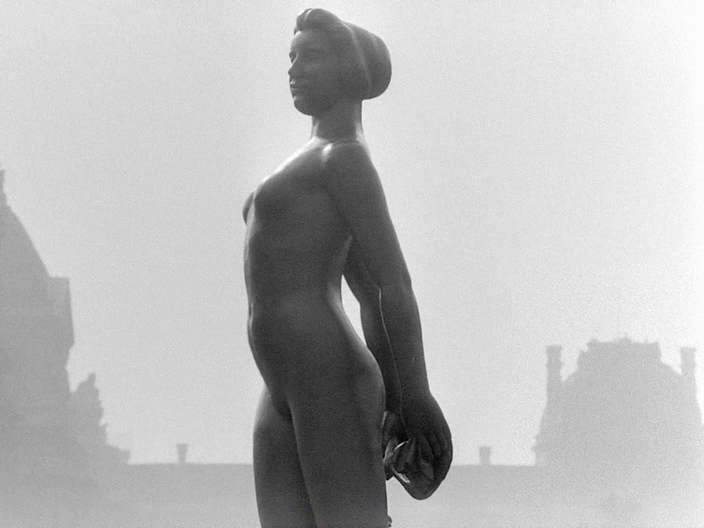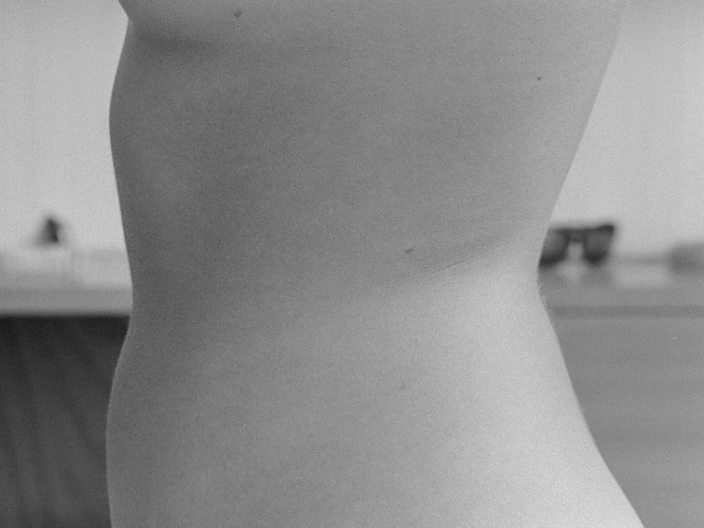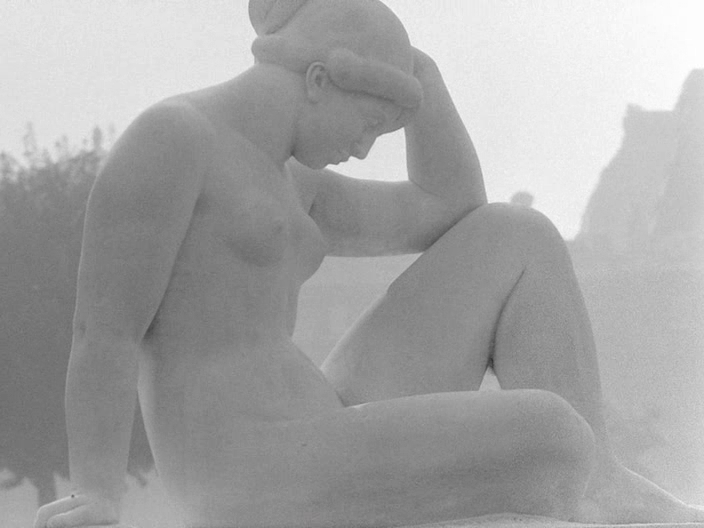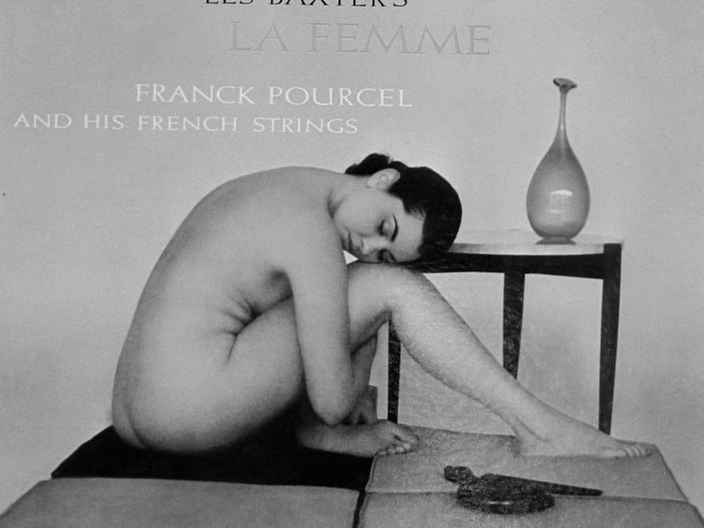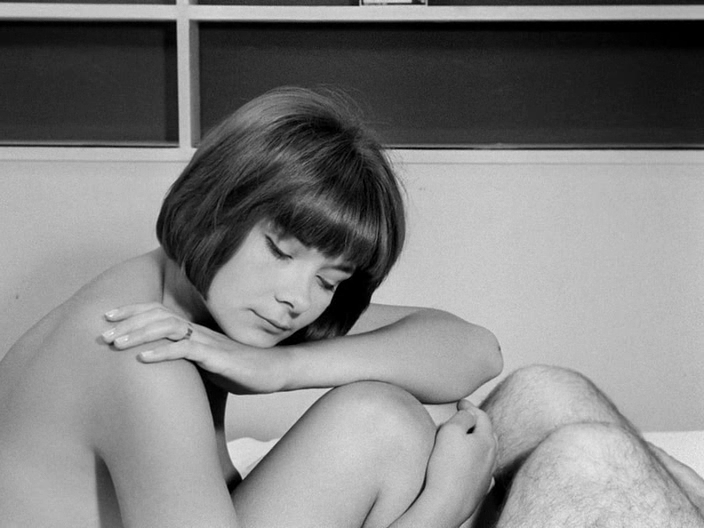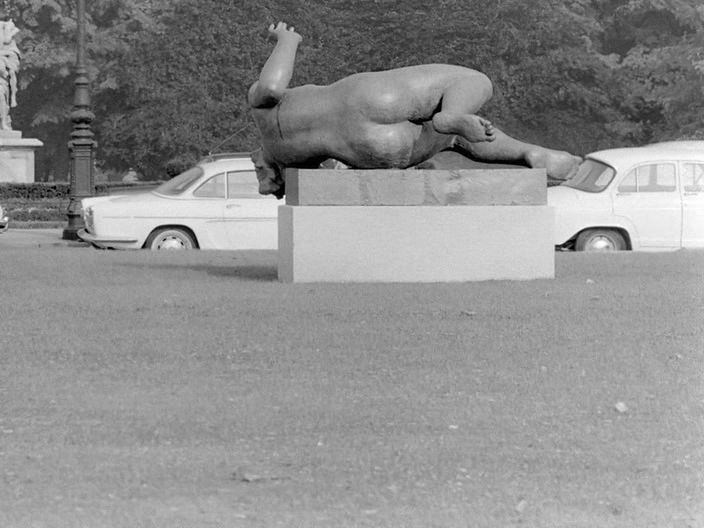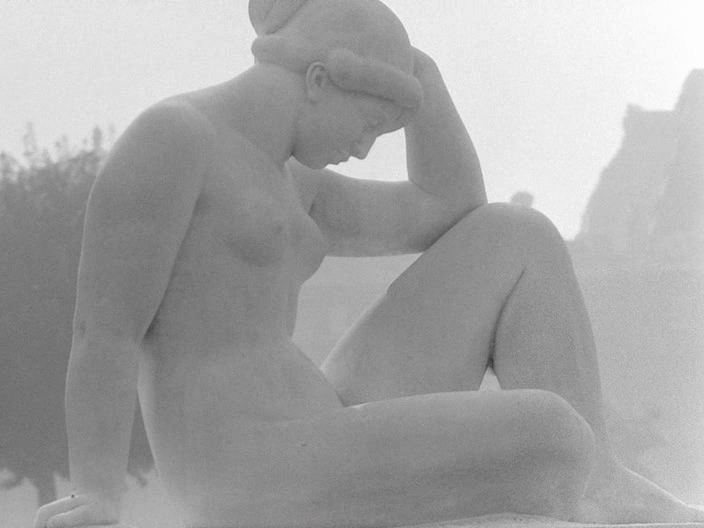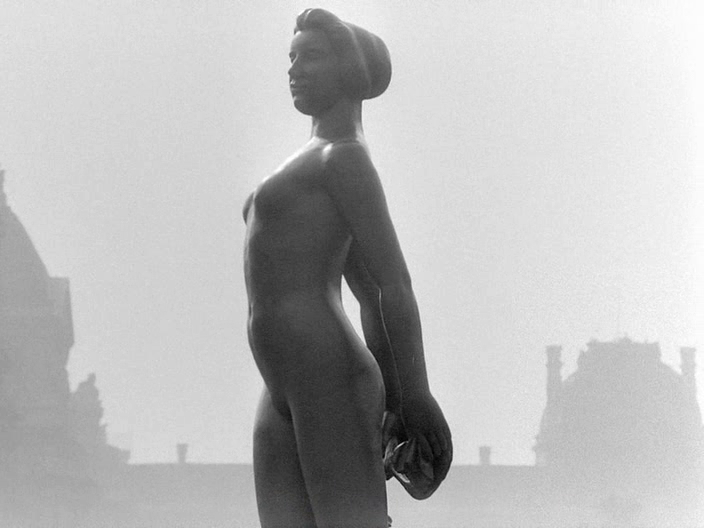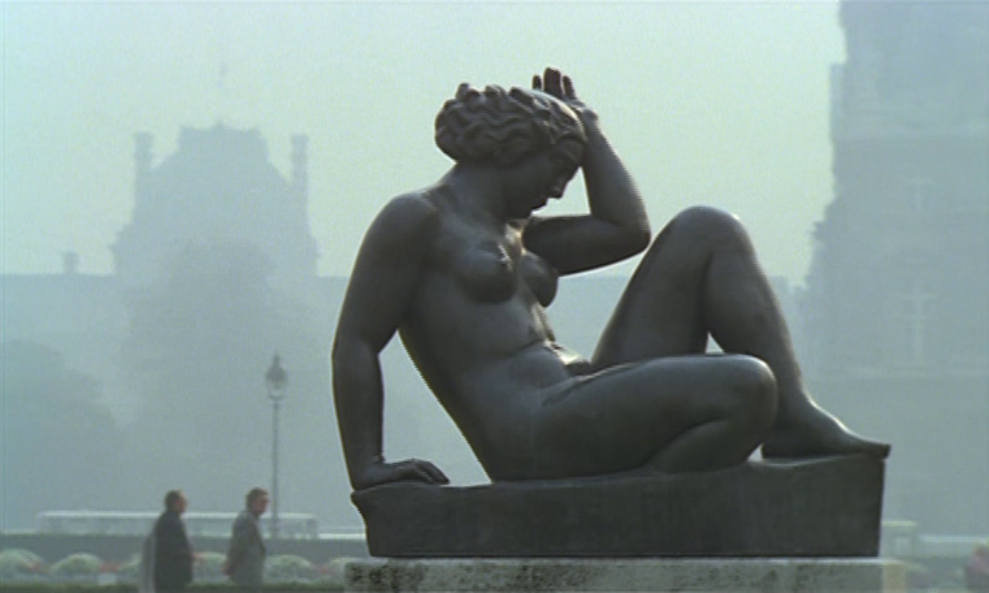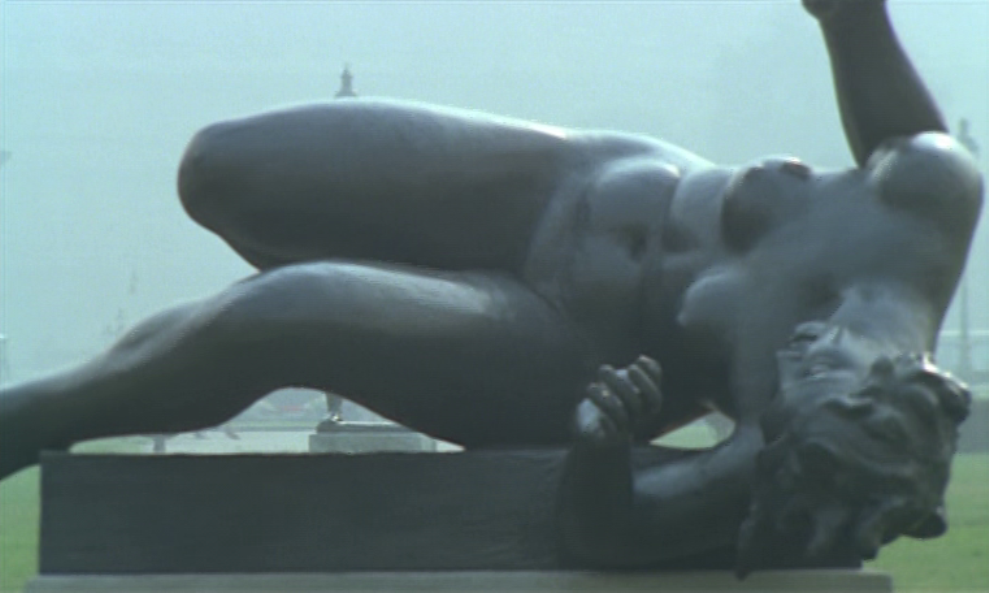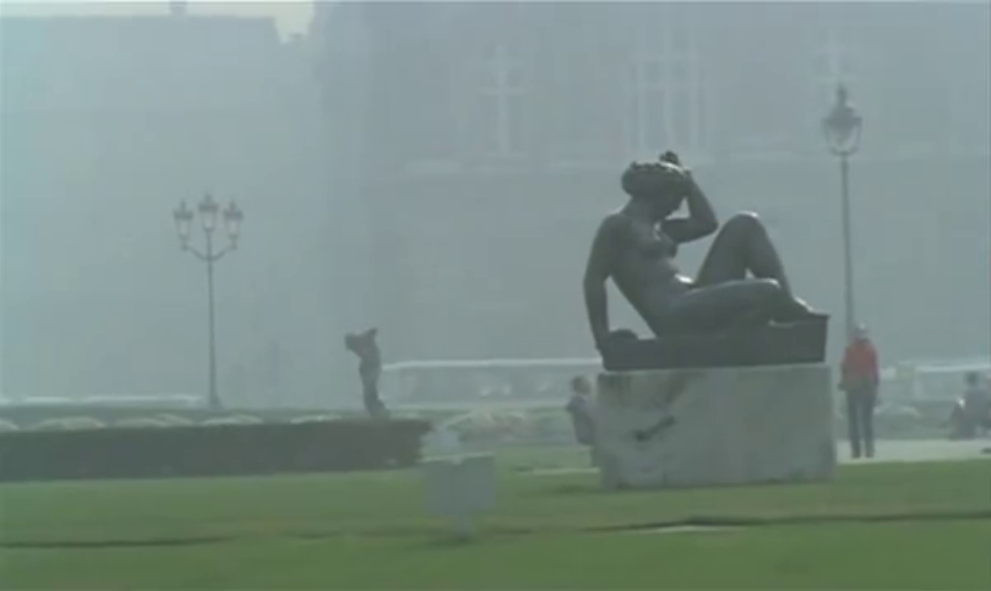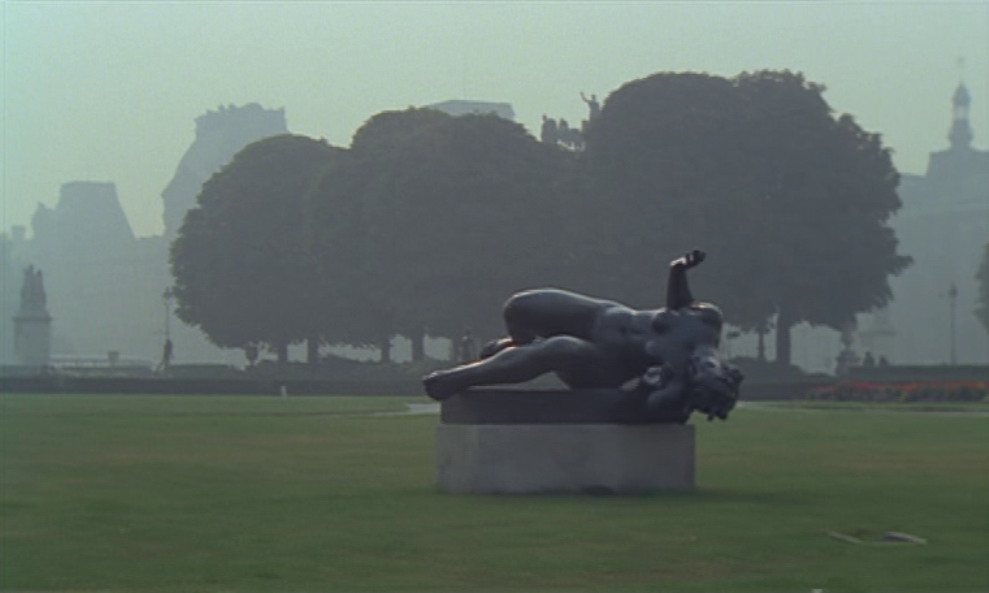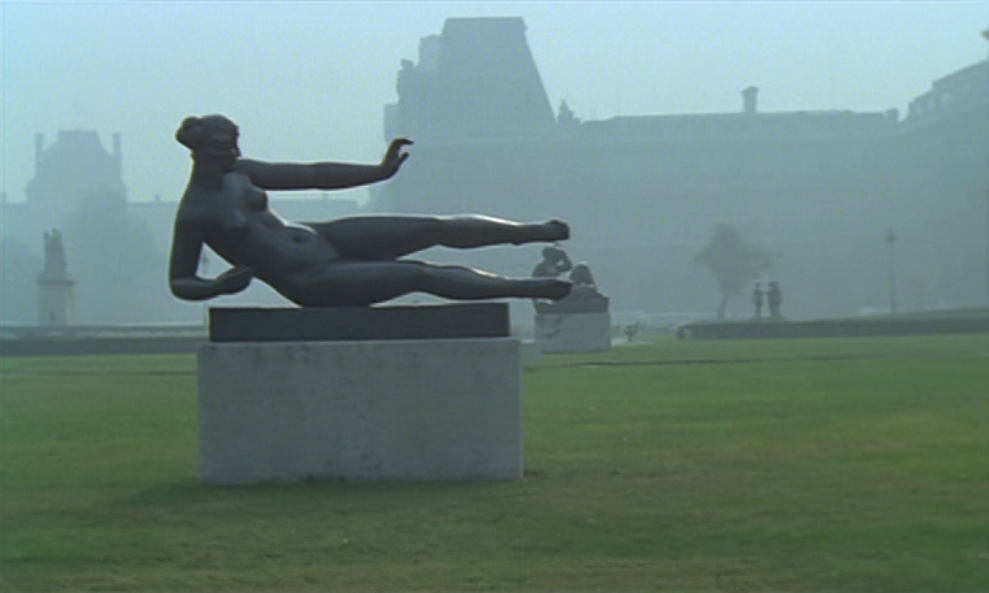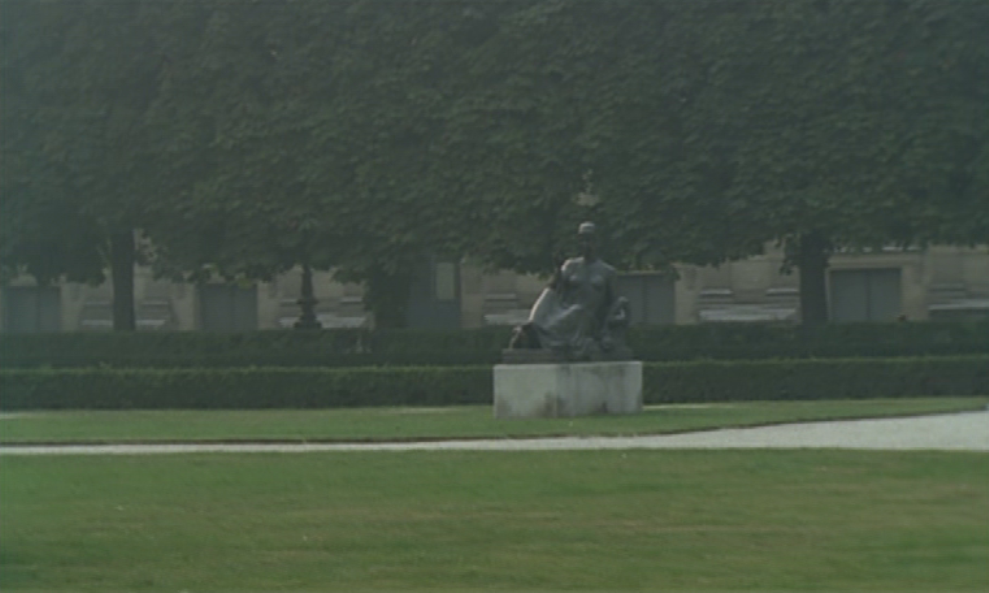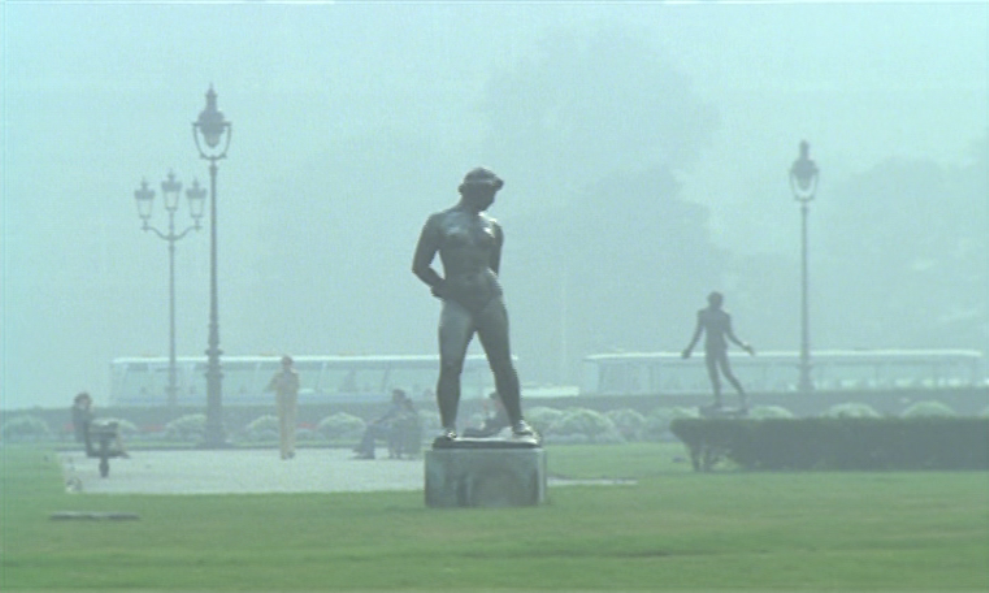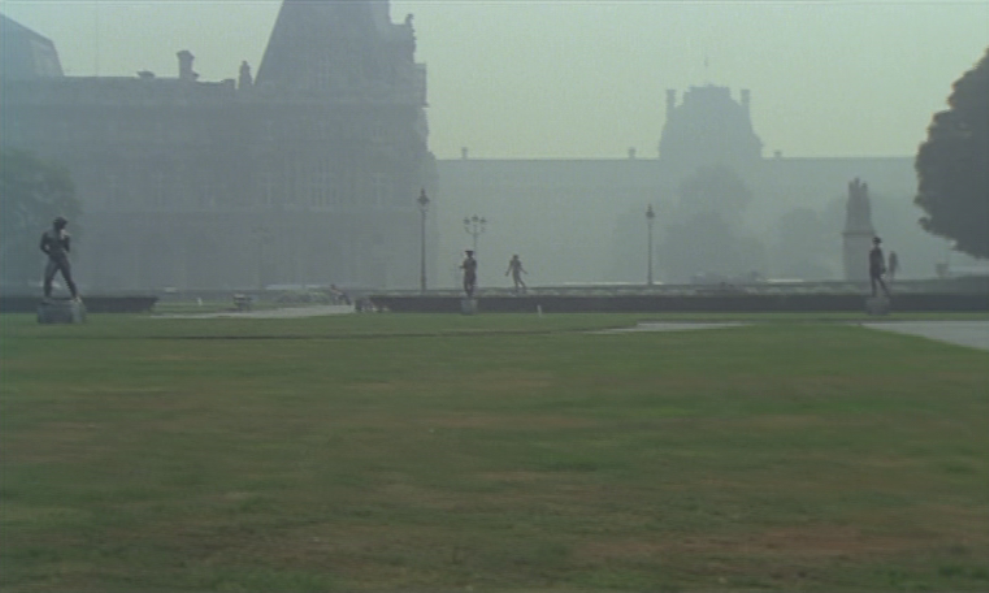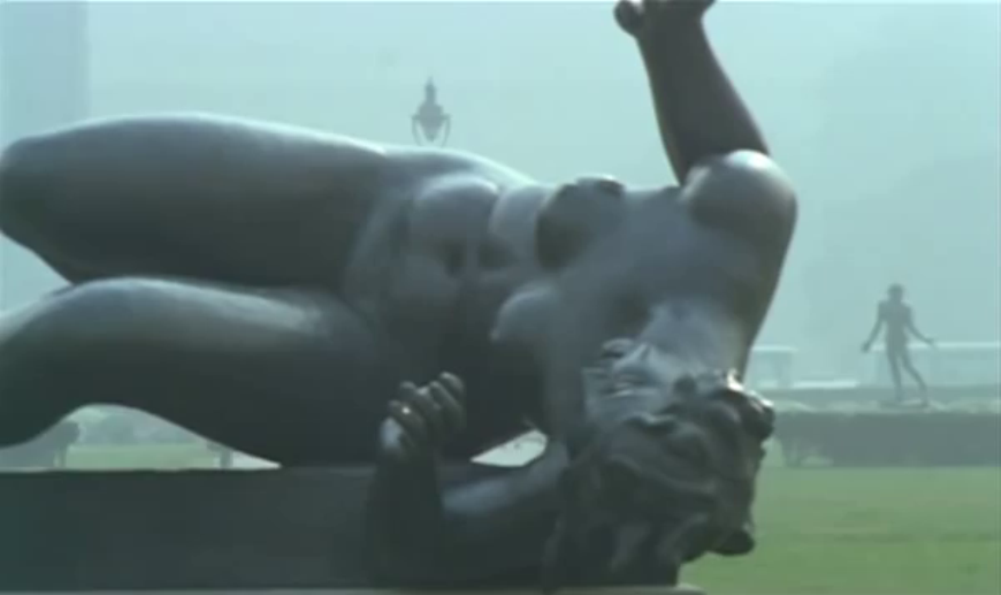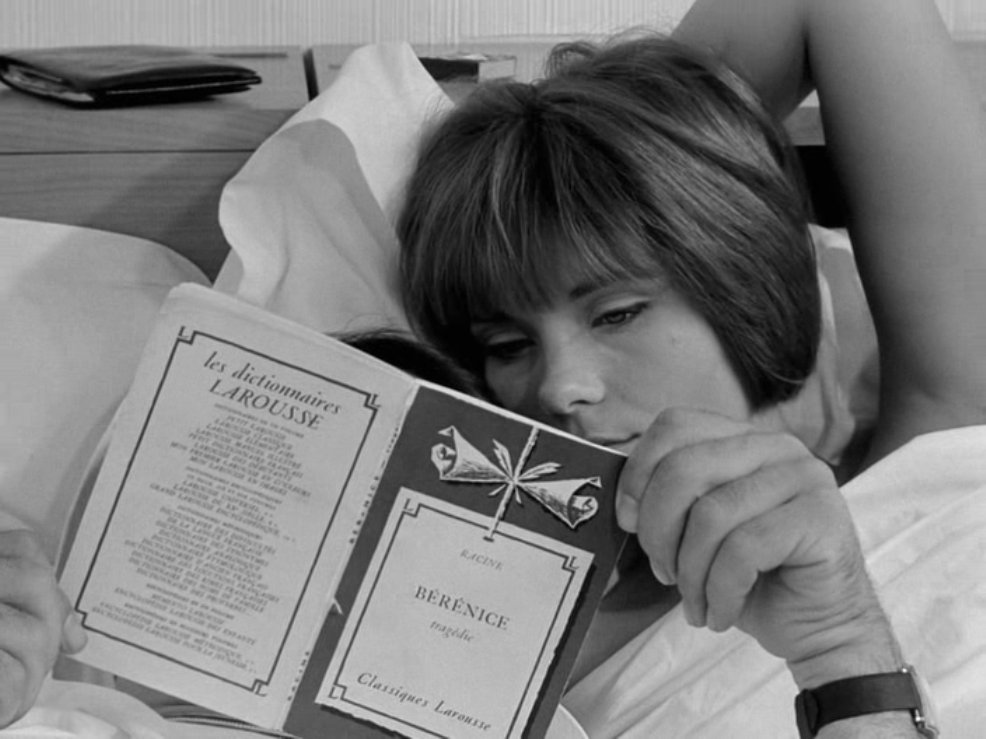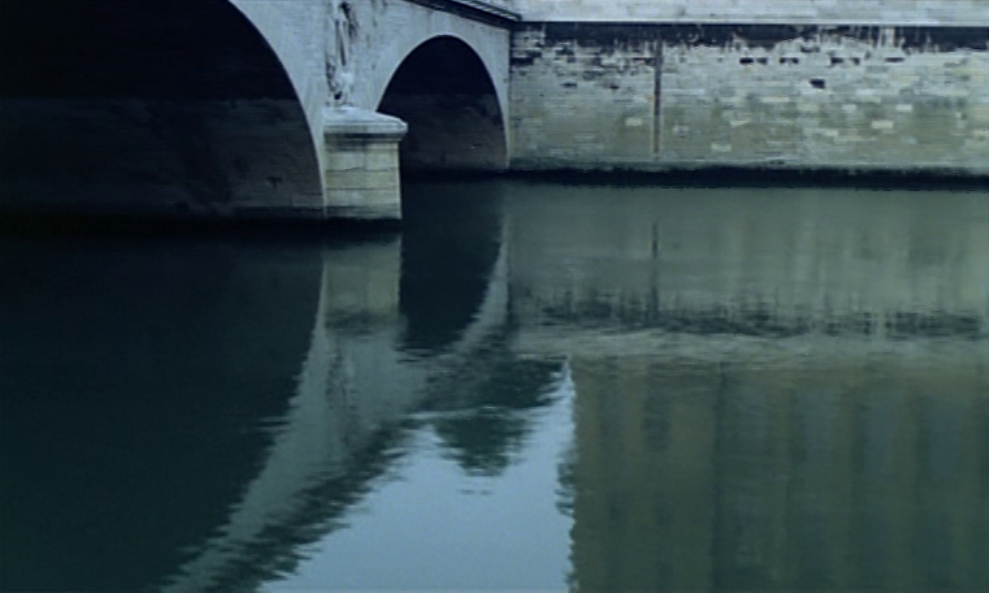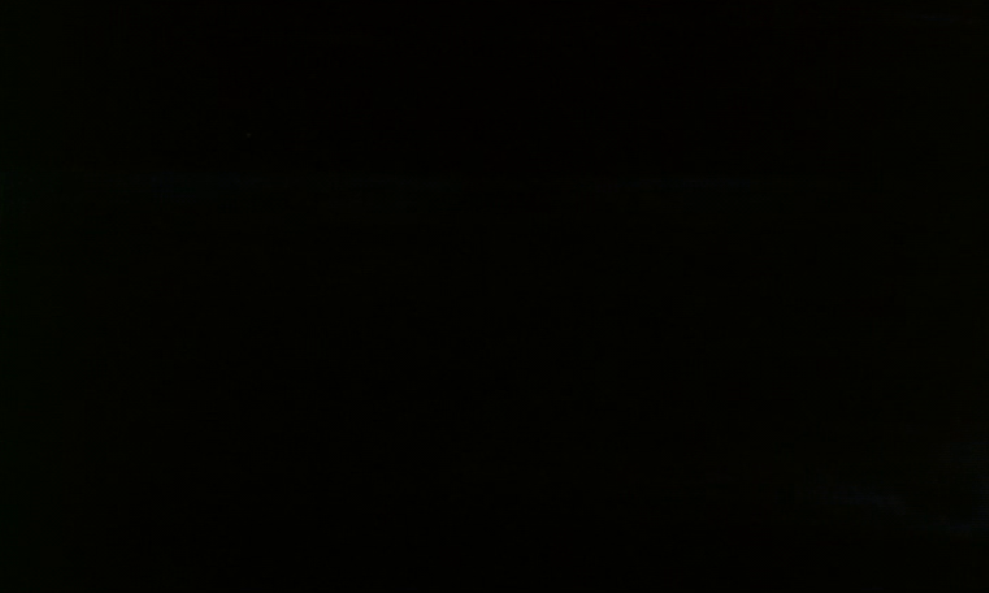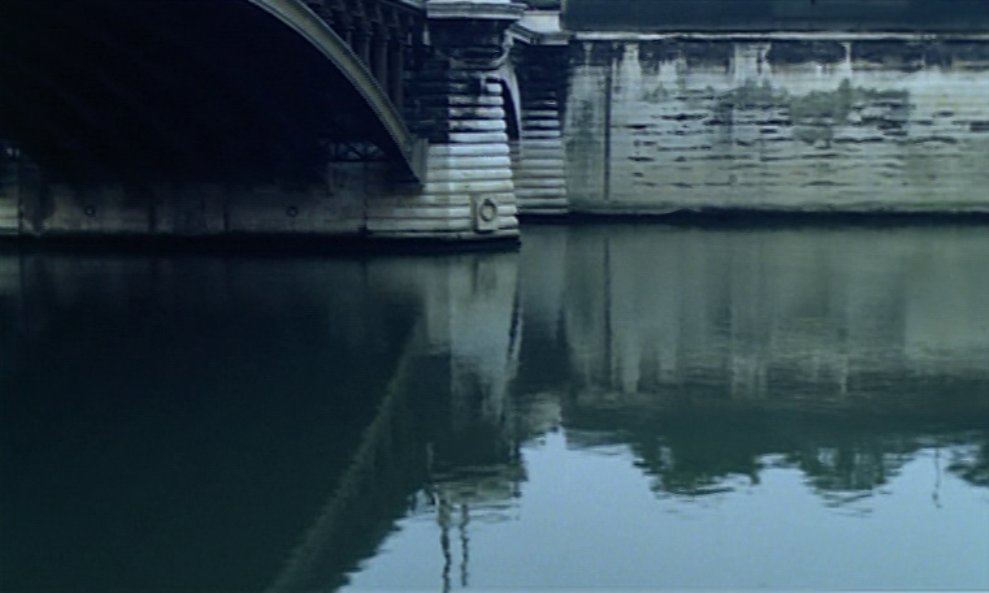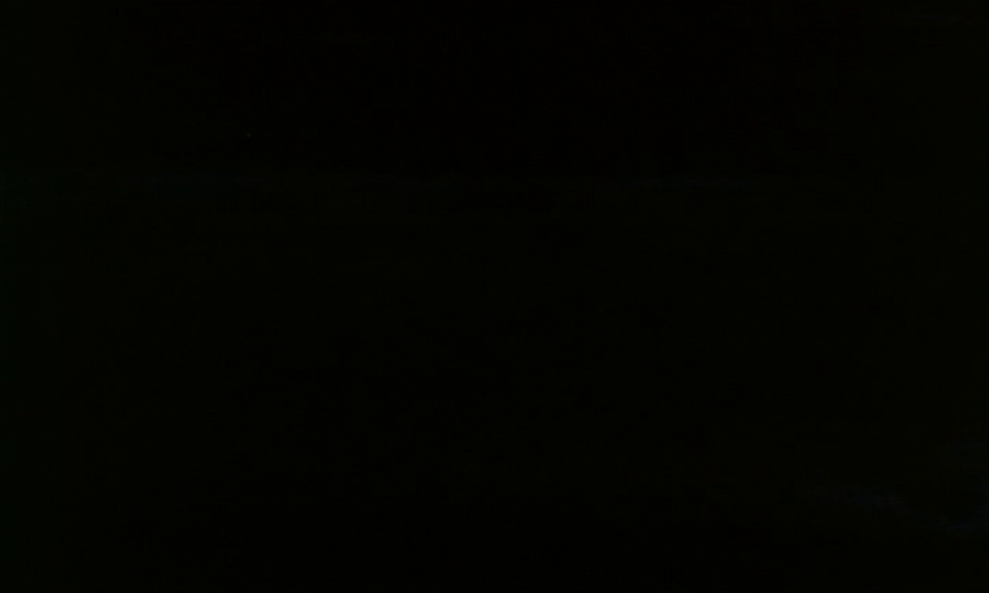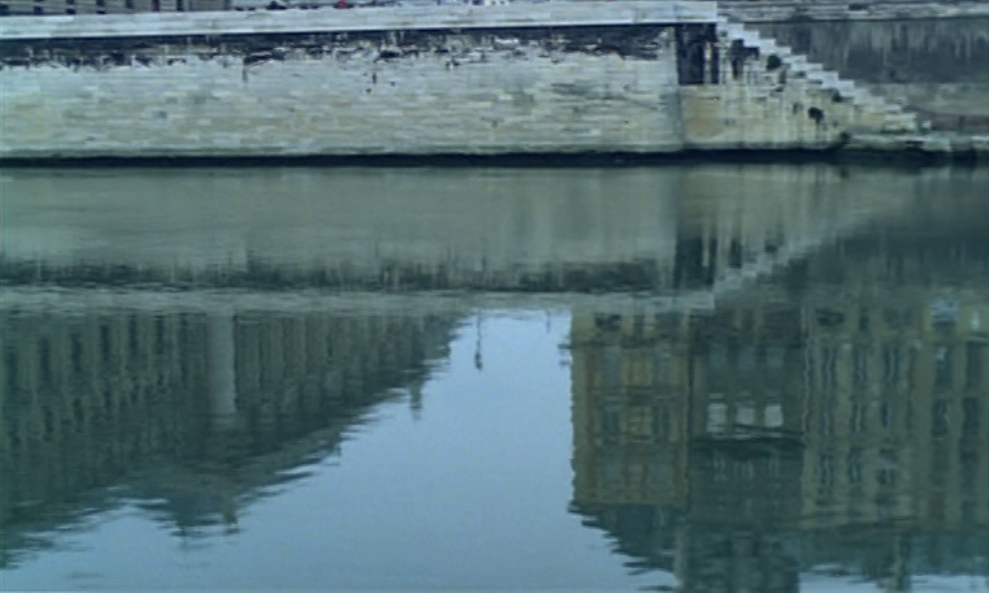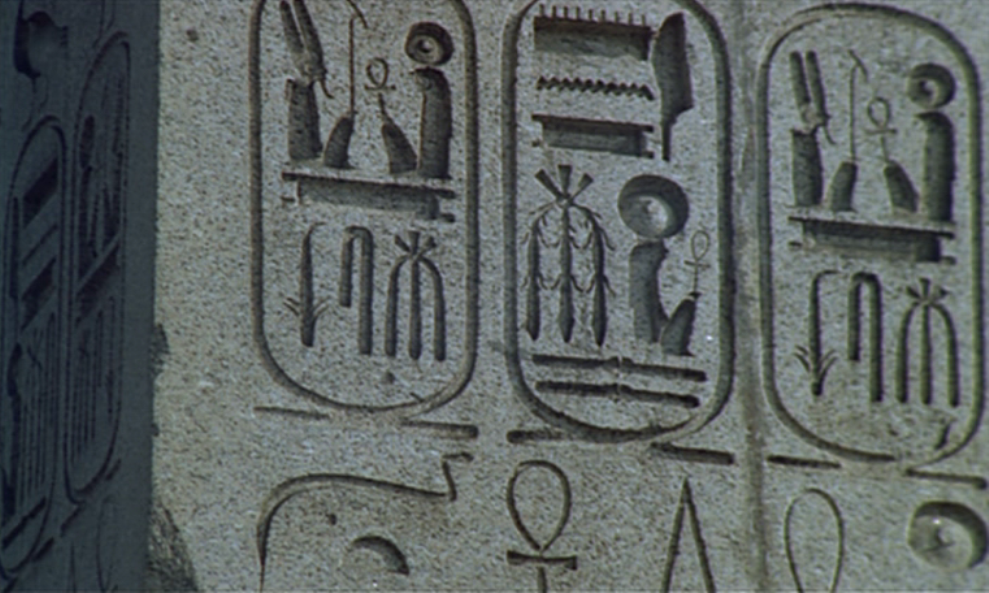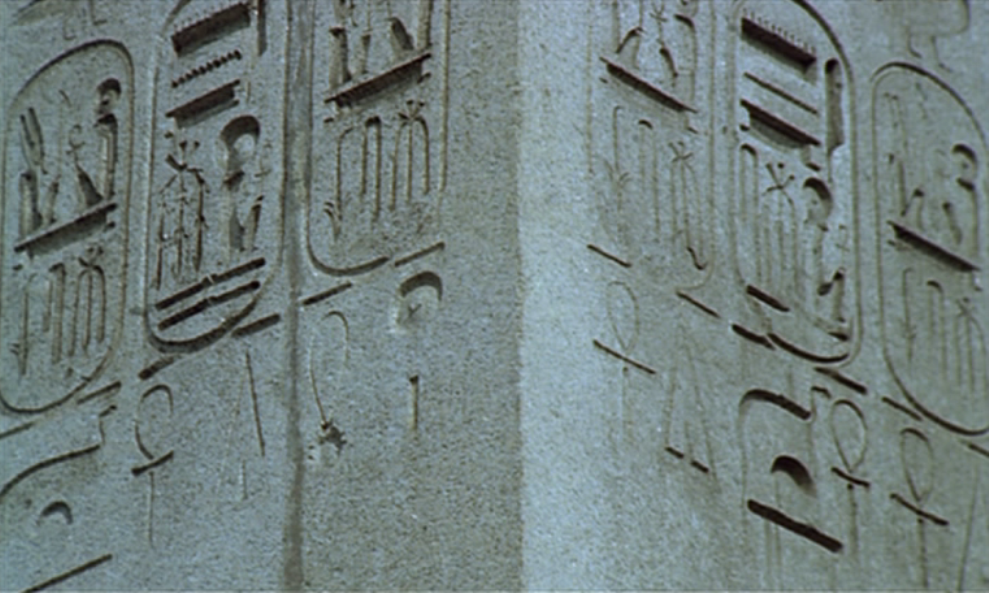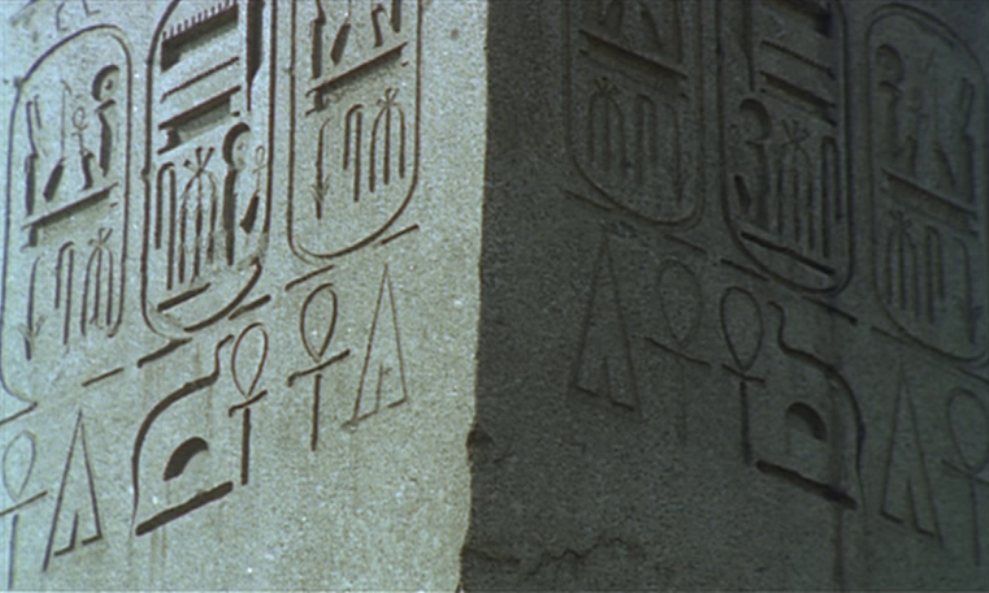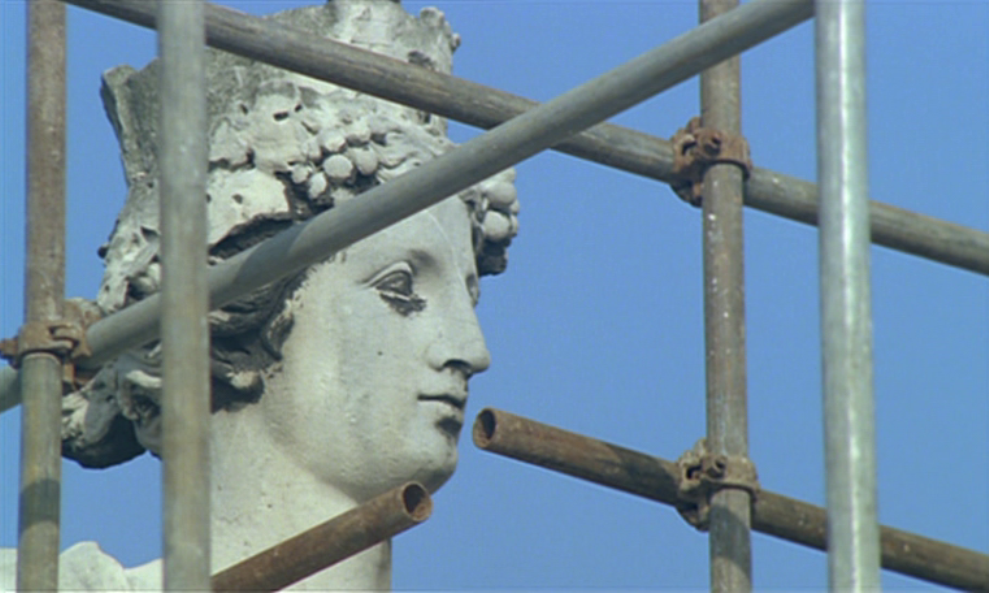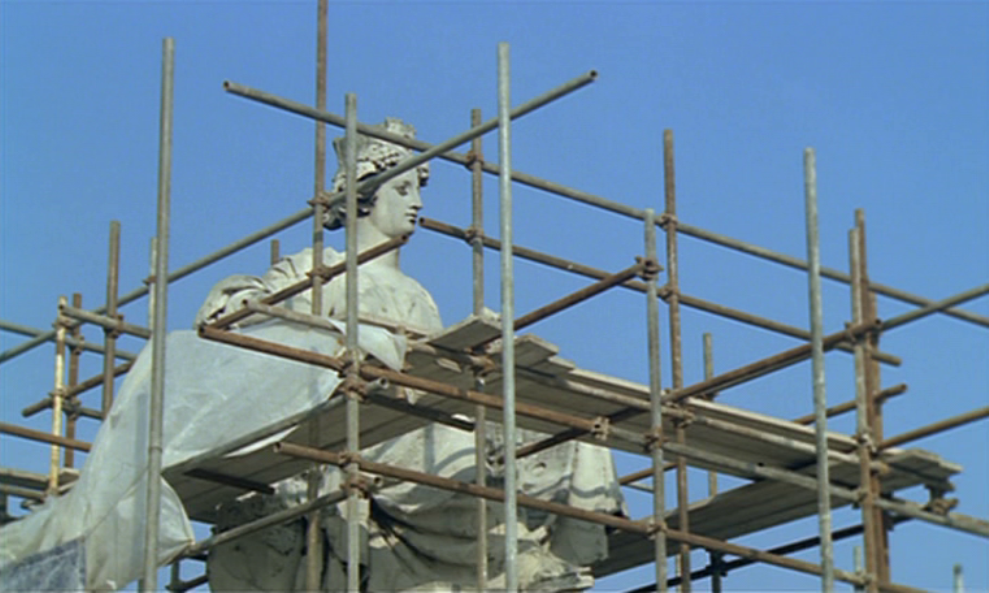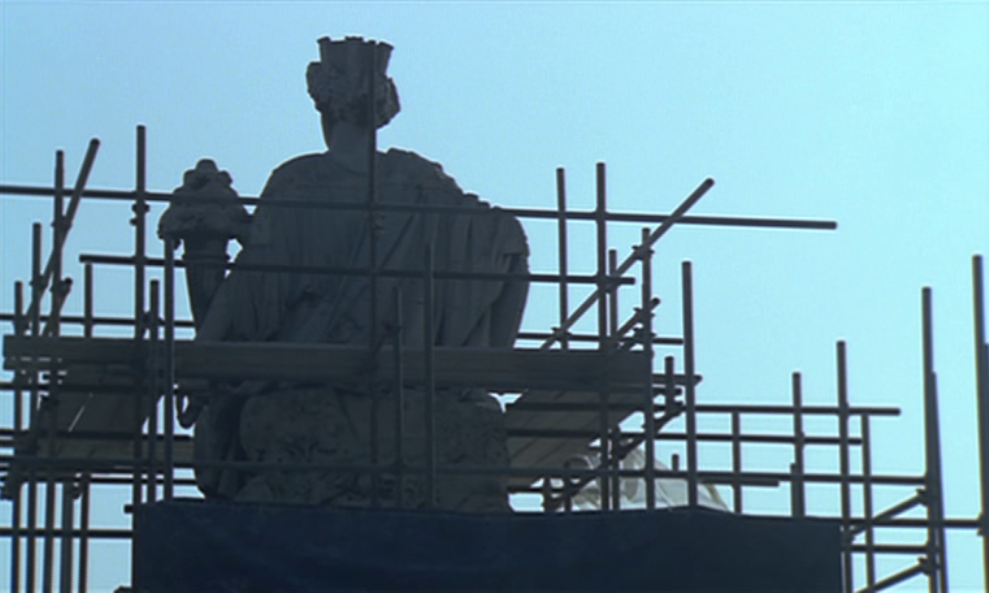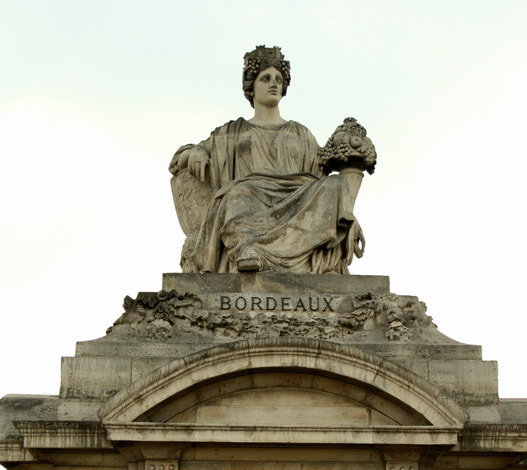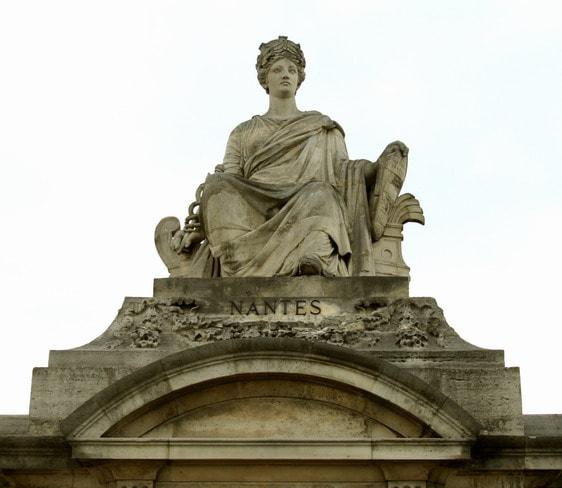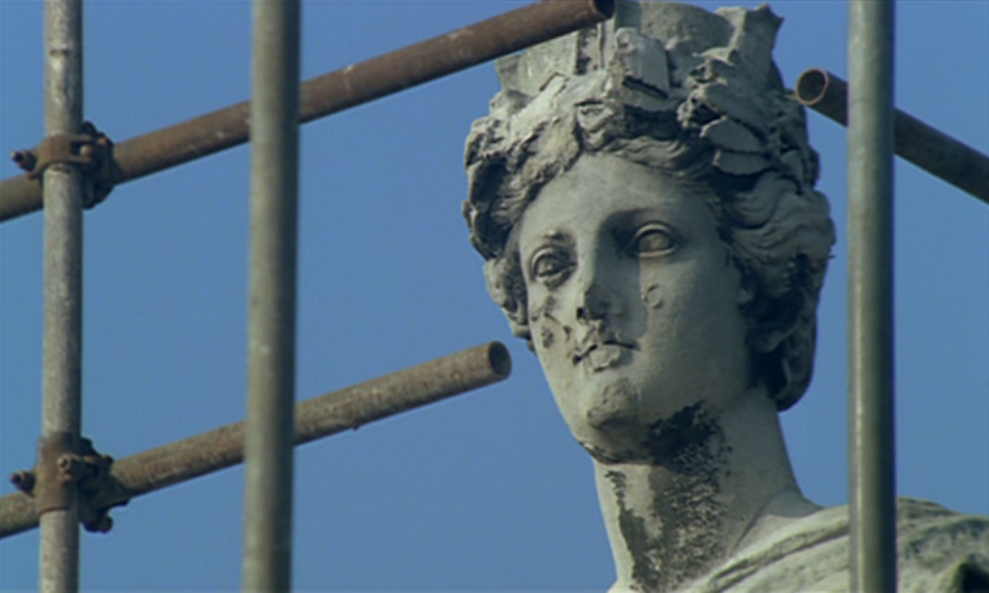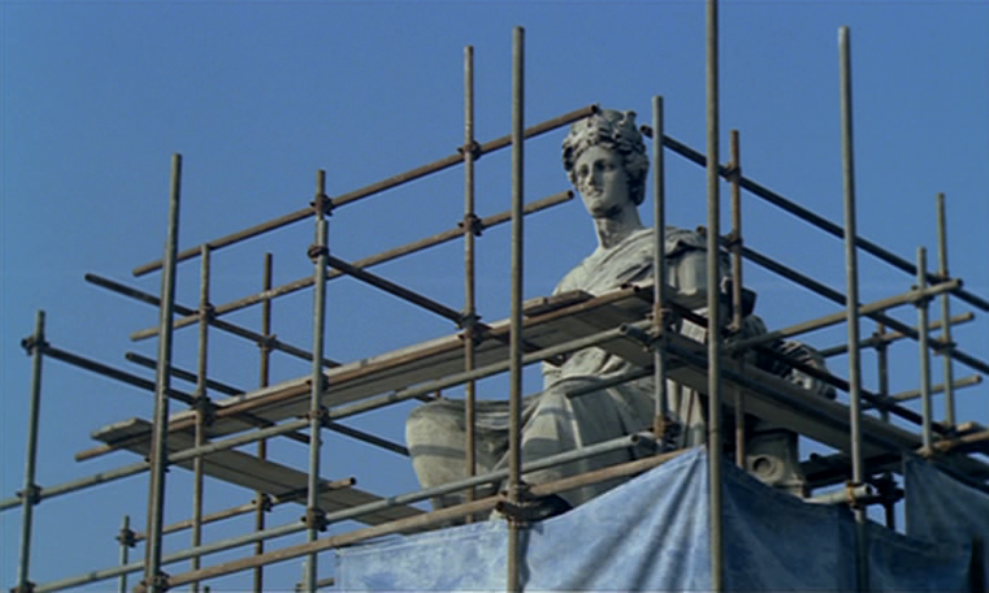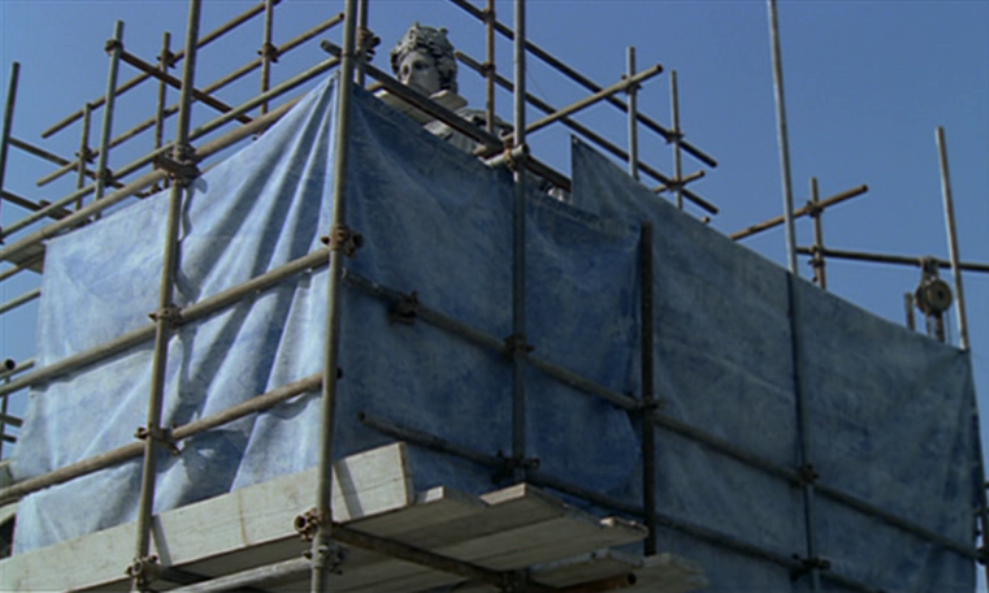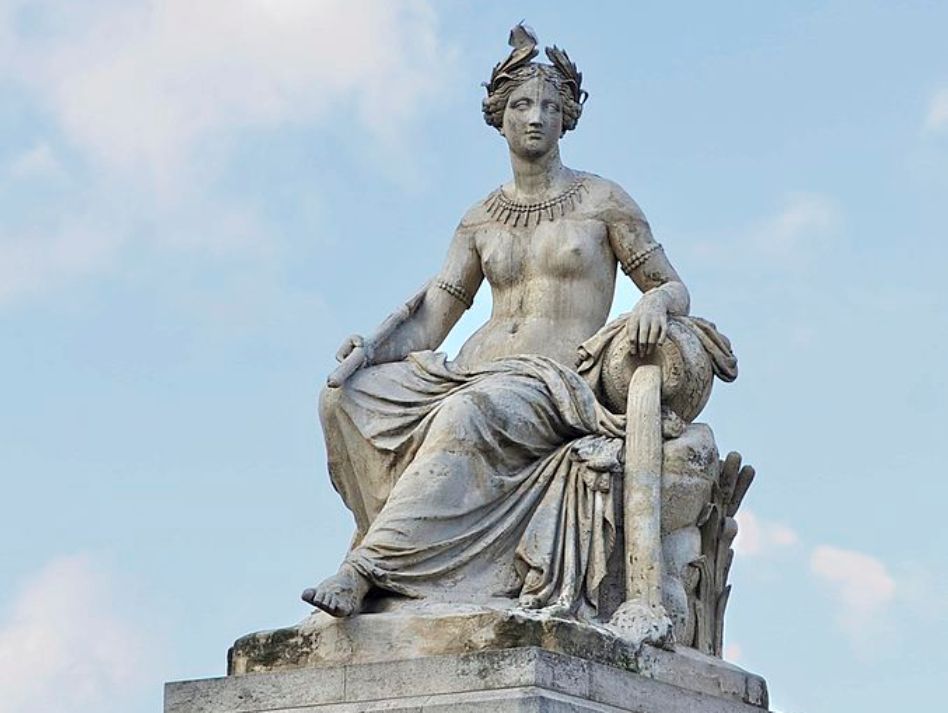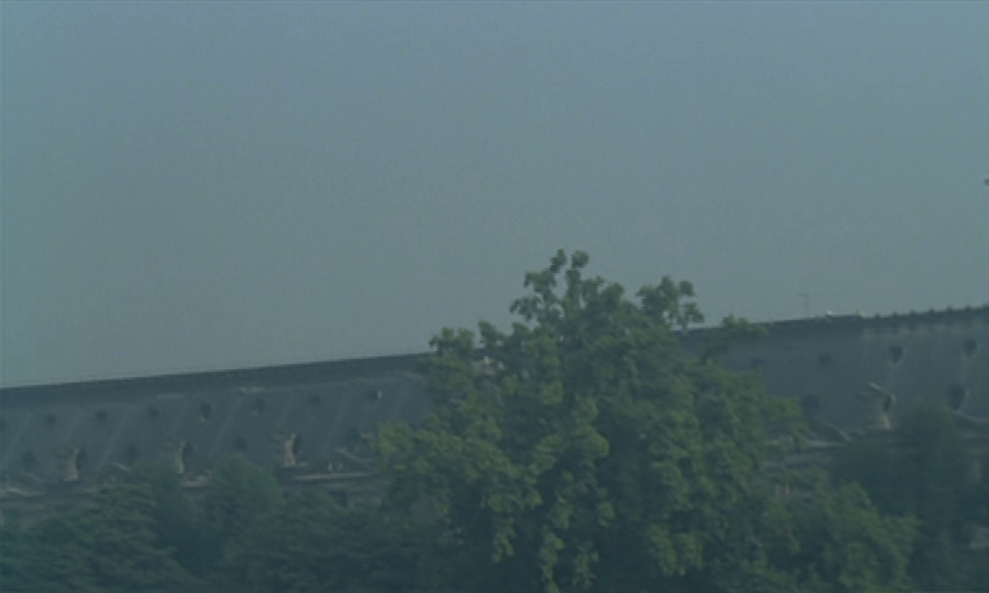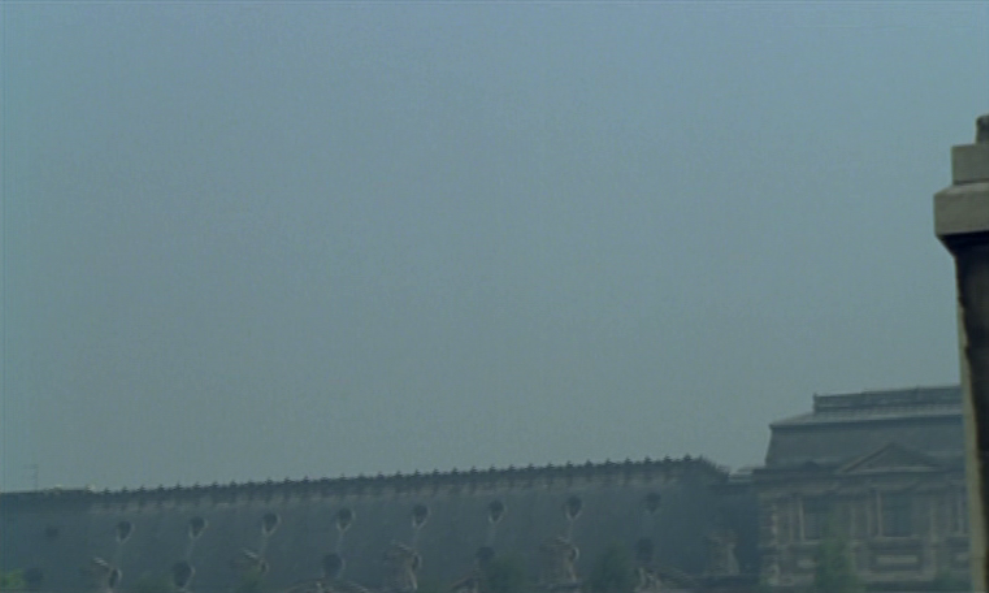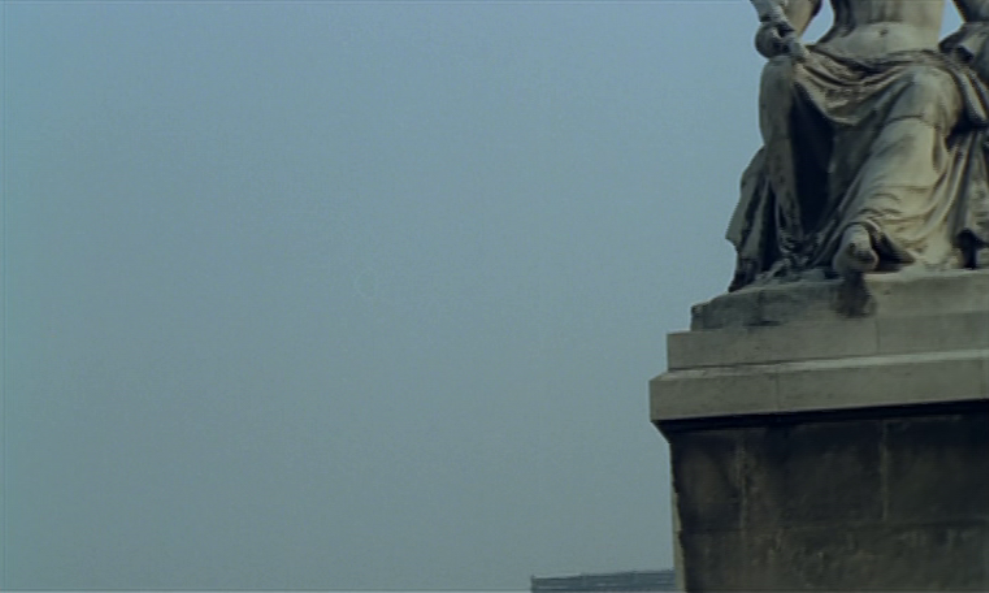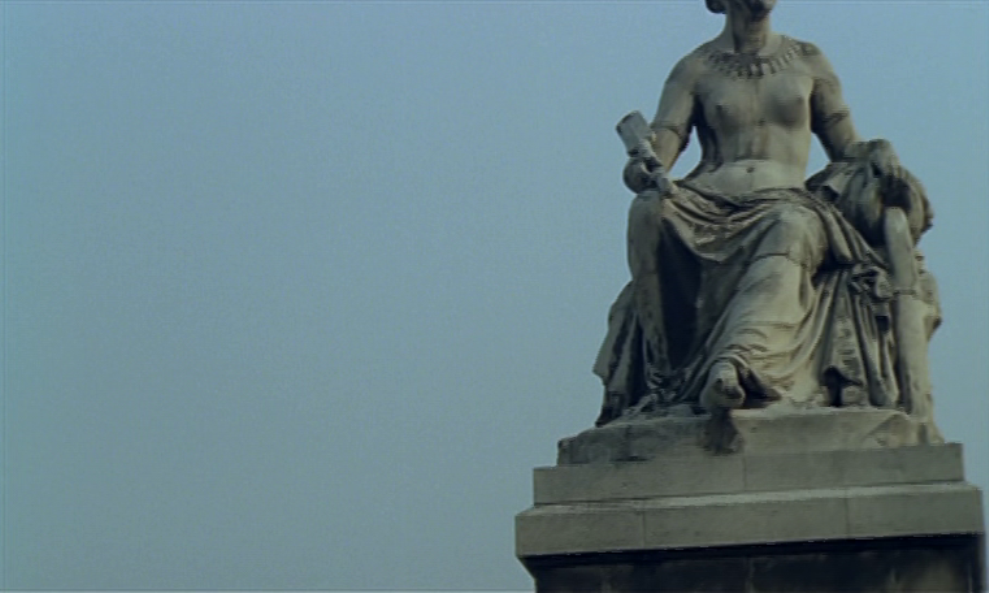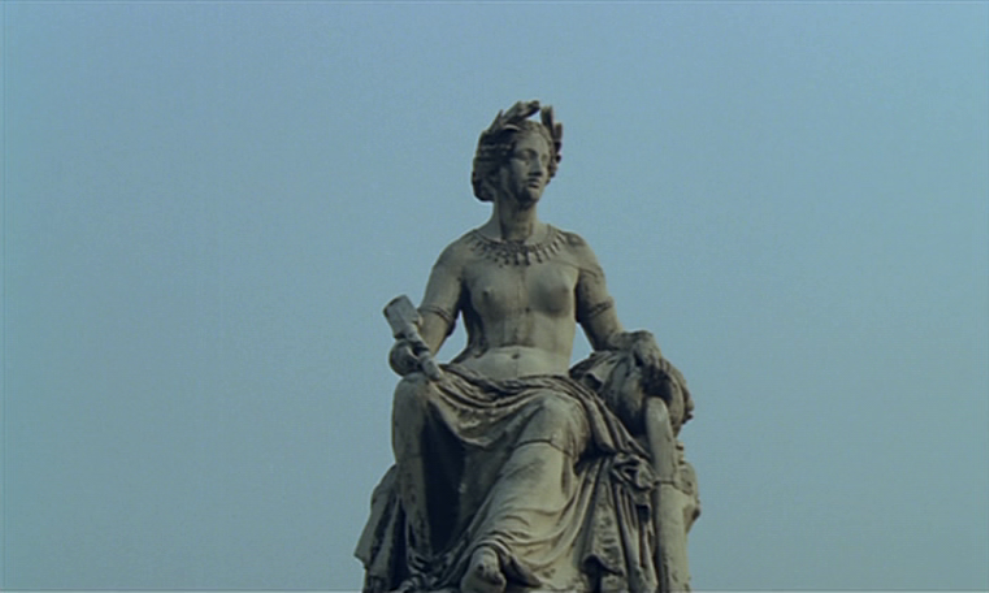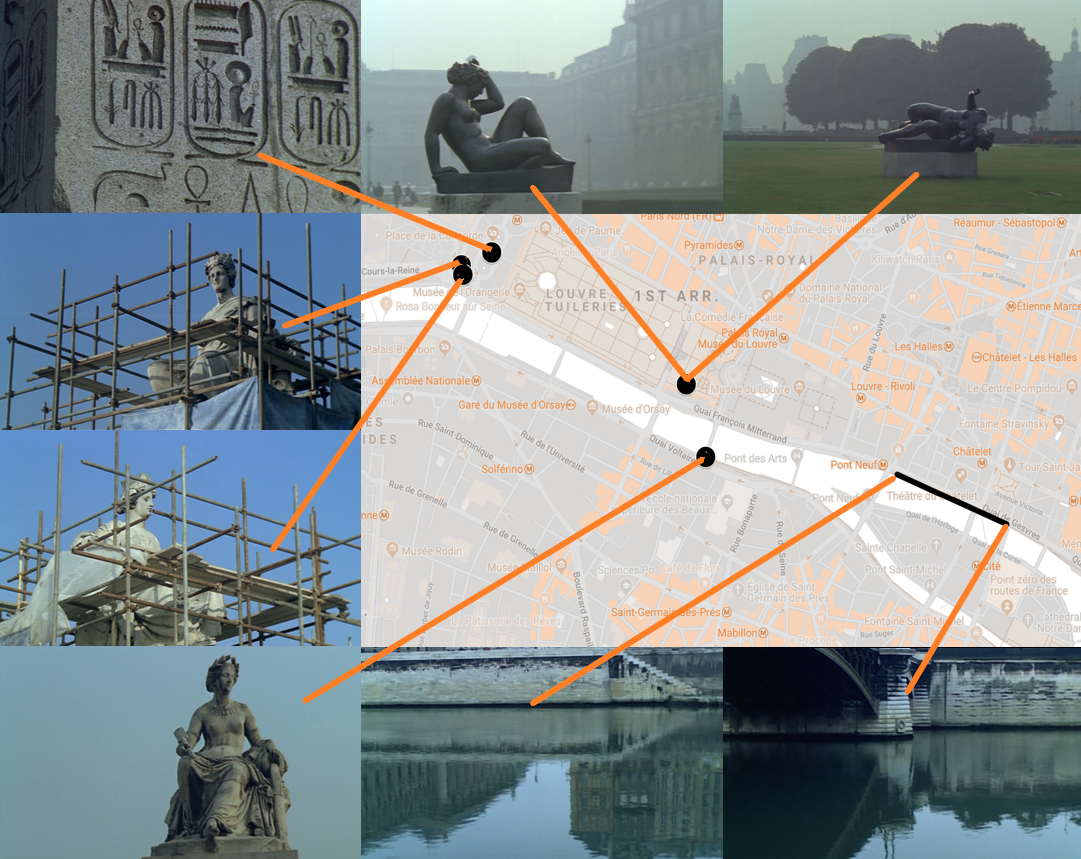some statues, and other sights, in two Paris films
Fifteen minutes into Une femme mariée (Jean-Luc Godard 1964), three views of statues by Aristide Maillol appear as inserts while the protagonist Charlotte and her lover are driving across Paris, along the Right Bank of the Seine. The insertion of the statues here fits the topography of the car journey (though the starting point of this journey, the lover's apartment near the Square Sarah Bernhardt in the 20e, is topographically wayward). The car passes under the Pont de Bir-Hakeim (1), then we see the three statues in the Jardin du Carrousel (2), and then the car is on the Quai Henri IV (3), just before passing under the Pont d'Austerlitz:
Maillol's naked women are part of a visual continuum in the film that includes naked or semi-naked women on advertising hoardings, in magazines, on album covers, in a comic strip and in a medical textbook:
It also includes, of course, the nakedness of the actress Macha Méril, fragmentarily framed:
Maillol's forms seem at moments to inform these framings, as here:
And here, where the pose assumed by Méril matches that of Maillol's statue and of the model on the cover of La Femme, a Franck Pourcel album:
Though Maillol's statues date from 1925, 1927 and 1943, their presence in Godard's 1964 film is a contemporary reference, since they had all just been installed in the Jardin du Carrousel that year:
There were, as far as I can work out, thirteen Maillol statues in the Jardin du Carrousel when Godard filmed there. Several more were added in 1965, and the marble version of Méditerranée was replaced with a bronze version.
In 1979 Marguerite Duras also filmed in the Jardin du Carrousel, the footage ending up in Césarée, a film lasting just under 11 minutes and comprising 39 shots. Seven of these shots show Maillol statues in the Jardin du Carrousel. Each shot tracks to take in several statues from various angles and distances. Three appear in the foreground:
In 1979 Marguerite Duras also filmed in the Jardin du Carrousel, the footage ending up in Césarée, a film lasting just under 11 minutes and comprising 39 shots. Seven of these shots show Maillol statues in the Jardin du Carrousel. Each shot tracks to take in several statues from various angles and distances. Three appear in the foreground:
They also appear in the mid-ground, and in the mid-ground we also see the Monument aux morts de Port-Vendre (lead, 1923) and Action enchaînée (bronze 1908):
Though Montagne is a very similar composition to Méditerranée, and there is a brief glimpse in the far ground of Ile de France (right edge of the sixth image above), only Rivière makes a direct connection between the uses of Maillol in these two very different Paris films.
All of the images in Duras's film are of Paris, whereas her narration invokes the story of Césarée, known also as Bérénice, the Jewish queen abandoned by Titus when he became emperor in 79 C.E. It is only at the film's close that Paris is mentioned: 'Il fait à Paris un mauvais été, du froid, de la brume...'. Godard's film has a fragmentary narration spoken by Macha Méril. At the moment when we see the Maillol statues she says: 'Paris pleure après qu'il a plu...'. These two references to the weather in Paris do not make an intertextual connection, but the closing sequence of Une femme mariée does. The lover, Robert, is leaving Paris for Marseille, where he will be performing in a play by Racine. In this last scene Charlotte and Robert exchange lines from the play he is to perform, which is Bérénice, the story invoked in Césarée:
The Bérénice reference and the Maillol statues are the only tangible connections between Une femme mariée and Césarée, but there are, of course, more evident interactions elsewhere in the oeuvres of Duras and Godard.
(The rest of this post is a mapping of Césarée. A mapping of Une femme mariée is coming soon.)
Including the views of Maillol statues there are five types of image in Césarée, including also the inserts of black screen, of which there are eight. These non-images are directly linked to the representation of Paris by their emulation of the screen's blackness when the camera twice passes under bridges (the Pont au Change and the Pont Notre Dame) and nothing can be seen:
The view of the Seine in this long lateral tracking shot is a third type of image in Césarée. The camera appears to be travelling on the river but in fact it is on the Voie Georges Pompidou, a roadway running alongside the Seine, on the Right Bank. The shot starts just after the Pont-Neuf and travels eastwards, the buildings on the Quai de l'Horloge opposite reflected in the river. The shot ends under the Pont Notre Dame.
A fourth type of image in Césarée are the three successive shots of the Luxor obelisk in the centre of the Place de la Concorde:
I haven't seen any translation of these hieroglyphs so cannot say if their sense connects with Duras's narration, but I suspect that the connections are more oblique than that. As we study these inscriptions she speaks of the streets of Caesarea as narrow and dark, 'obscure' as this writing is. In Paris she evokes this other city. She speaks of dust, and says that in this dust we can still see, still read the thoughts of its people: 'the trace of the streets of the people of Caesarea. She, the queen of the Jews, returning there...'.
The narrative opposition is between Rome and Israel, but to invoke it over an image from the Egypt of Rameses II makes an older connection, to the time of Israel's captivity in Egypt. Both of these pairings are historical, whereas the Paris-Caesarea connection is analogical, merely.
The narrative opposition is between Rome and Israel, but to invoke it over an image from the Egypt of Rameses II makes an older connection, to the time of Israel's captivity in Egypt. Both of these pairings are historical, whereas the Paris-Caesarea connection is analogical, merely.
The fifth type of image is the dominant one, nineteen shots showing two statues of seated (and clothed) female figures, personifying the cities of Bordeaux and Nantes. Both statues are the work of Louis-Denis Caillouette and date from 1836. At the moment of filming they were being restored, hence in the film they are partly concealed by scaffolding and tarpaulin:
Bordeaux and Nantes are two of eight statues representing cities arranged around the Place de la Concorde, in the centre of which of course is the Luxor obelisk. (The other cities are Rouen, Brest, Lille, Strasbourg, Lyon and Marseille.)
These images of crumbling splendour, always in static shots, alternate with the robust statues of Maillol, always filmed by a fluid, fast-moving camera. The last shot of the film might seem to belong alongside those of Caillouette's statues, because it shows another seated personification, Louis Petitot's 1846 representation of La Seine:
She sits apart from the statues of Bordeaux and Nantes, however, firstly because she is not in need of repair, secondly because she is semi-naked, thirdly because she is positioned at one end of the Pont du Carrousel and not on the Place de la Concorde, and fourthly because Duras presents her not in another static shot but in a slow-moving pan that begins by following left-to-right the top of the building across the river, the Louvre, then rising upwards to frame her fully before coming to a halt:
Here are the locations of the sights seen in Duras's Césarée:
See here for François Bon's video homage to Duras's film, Rendre Duras à Césarée, filmed at Caesarea in Israel in November 2018.
